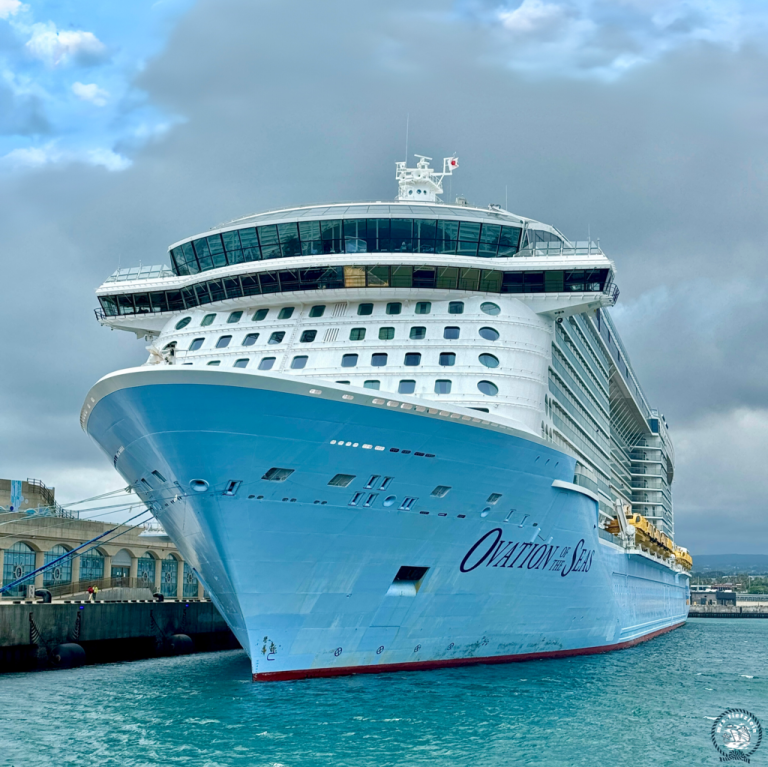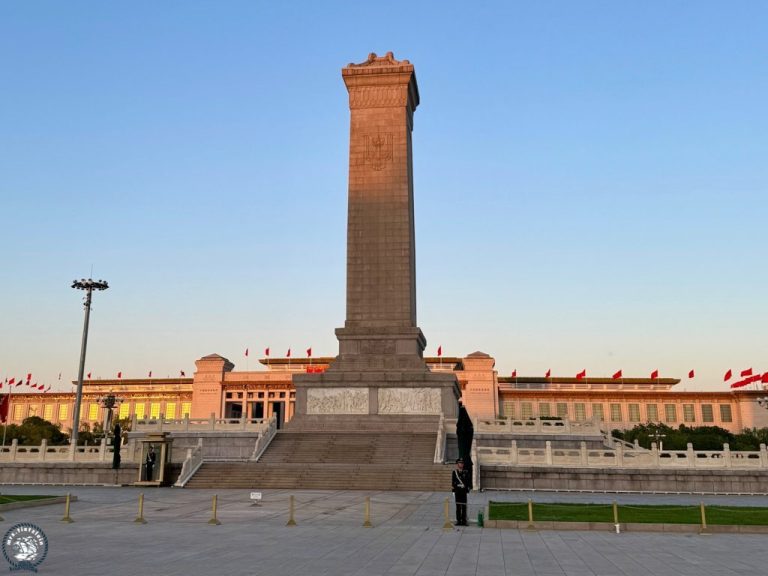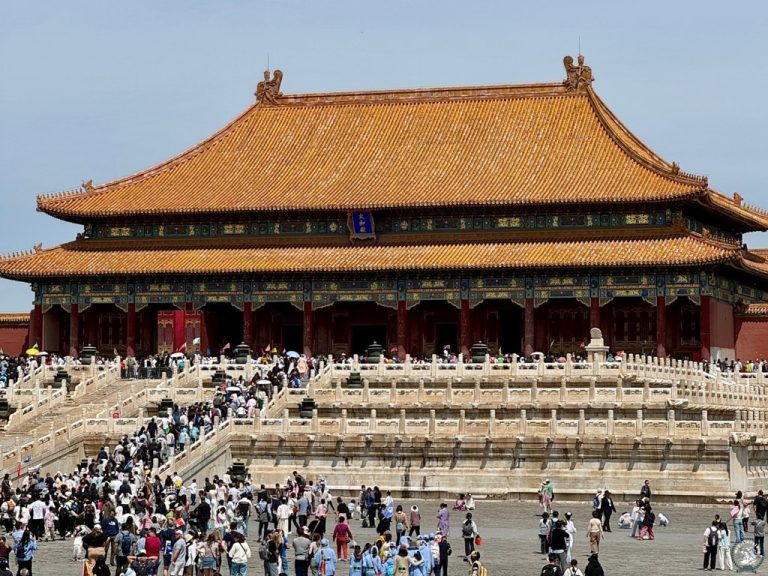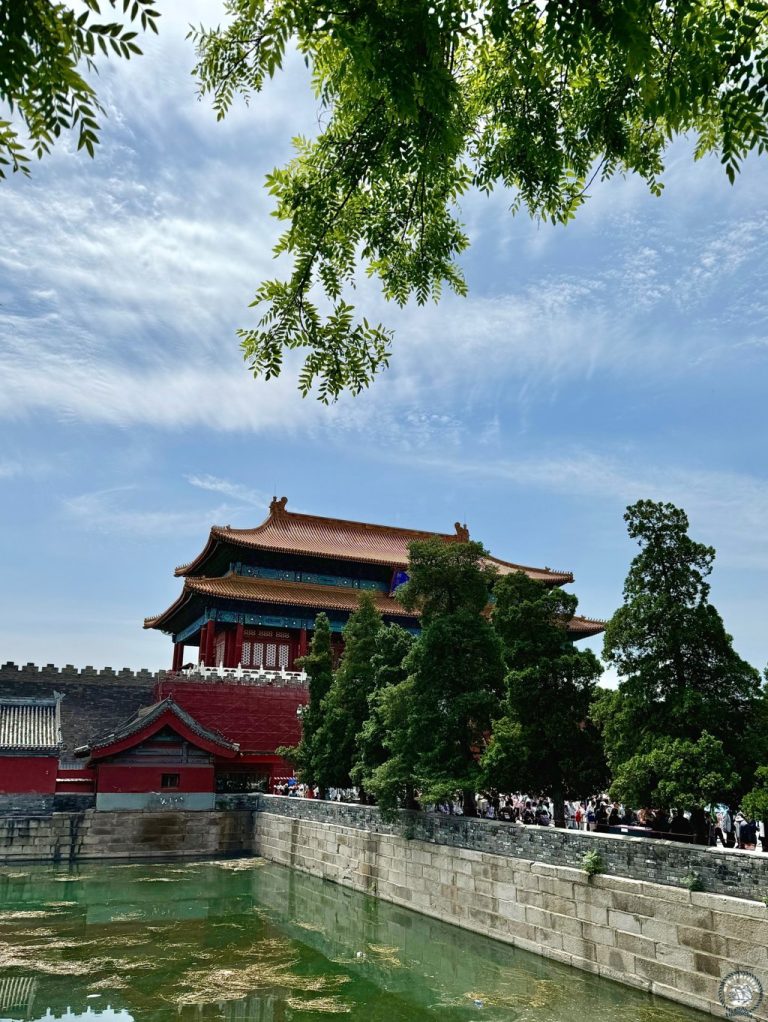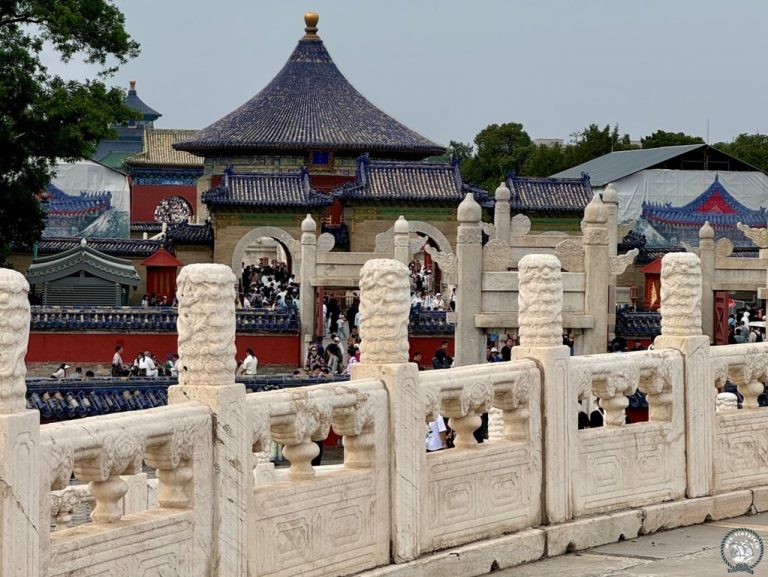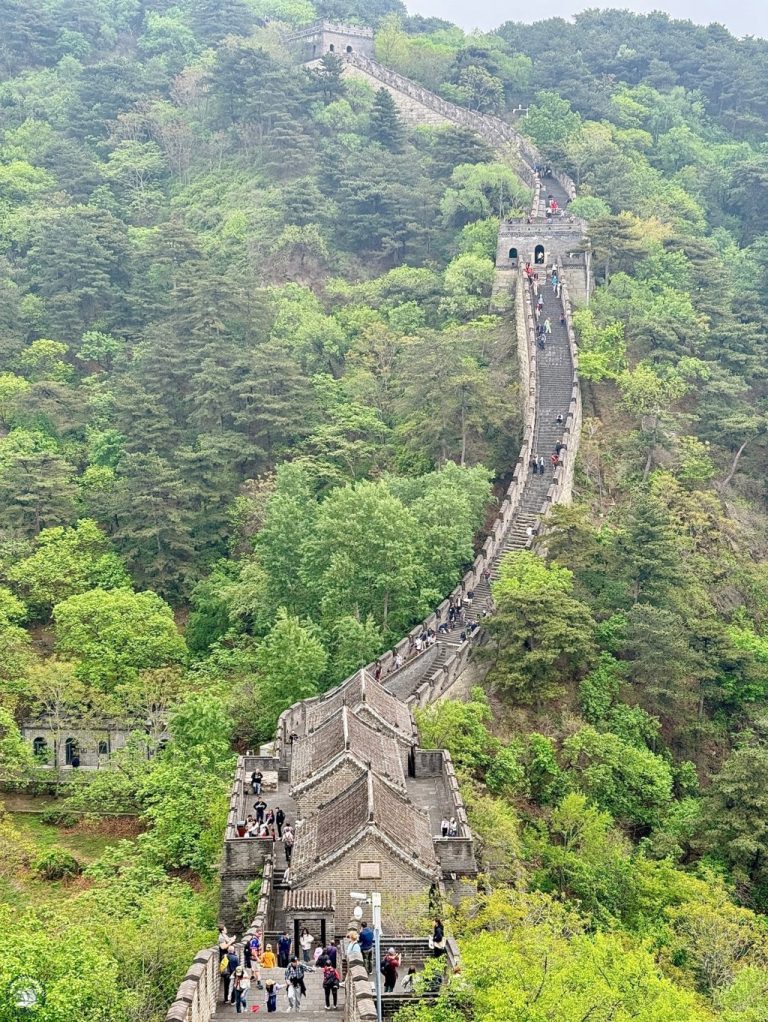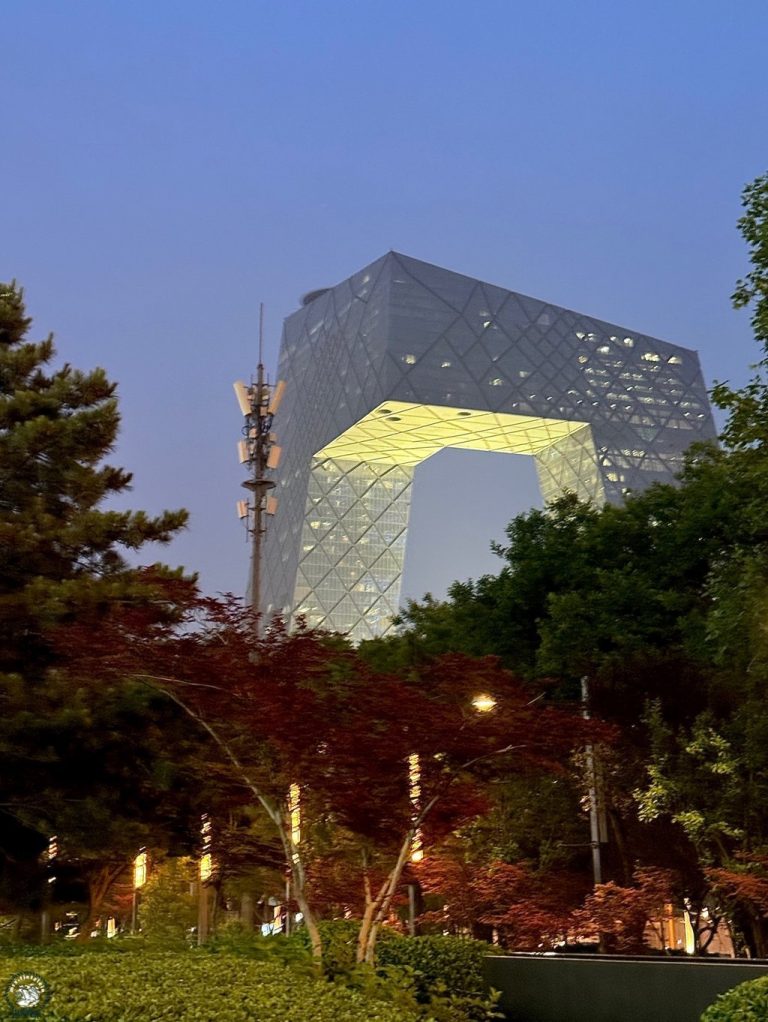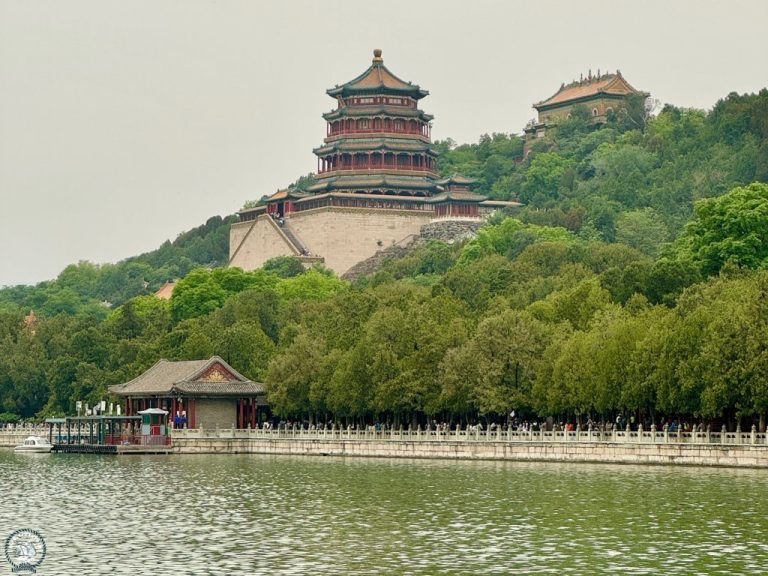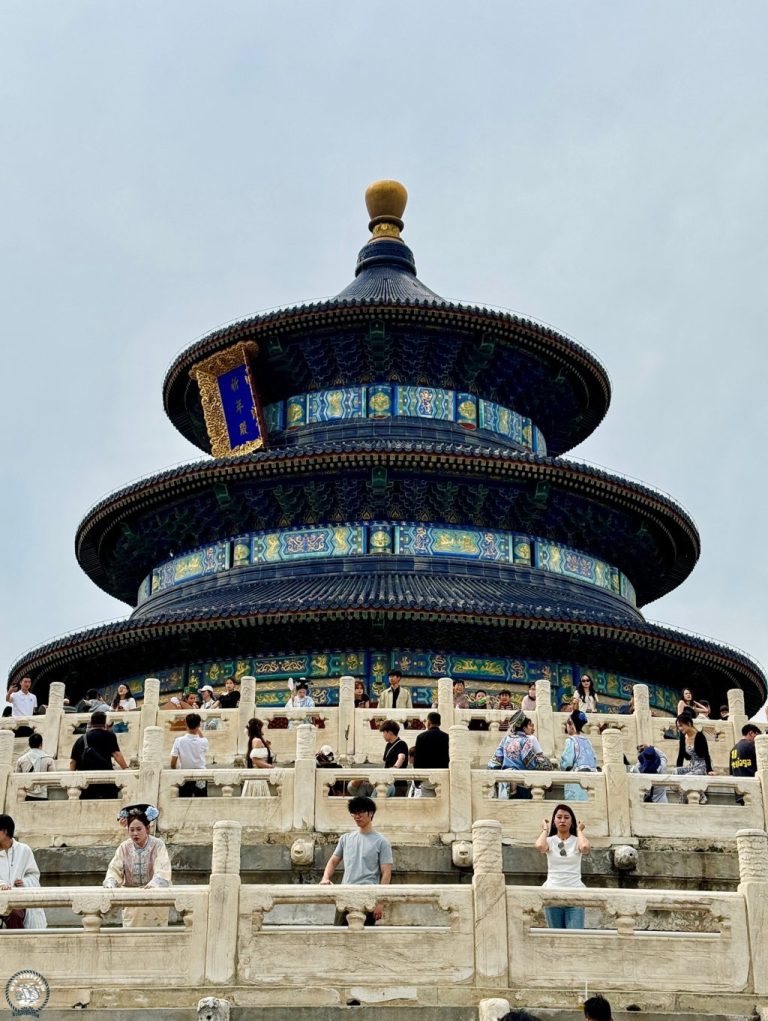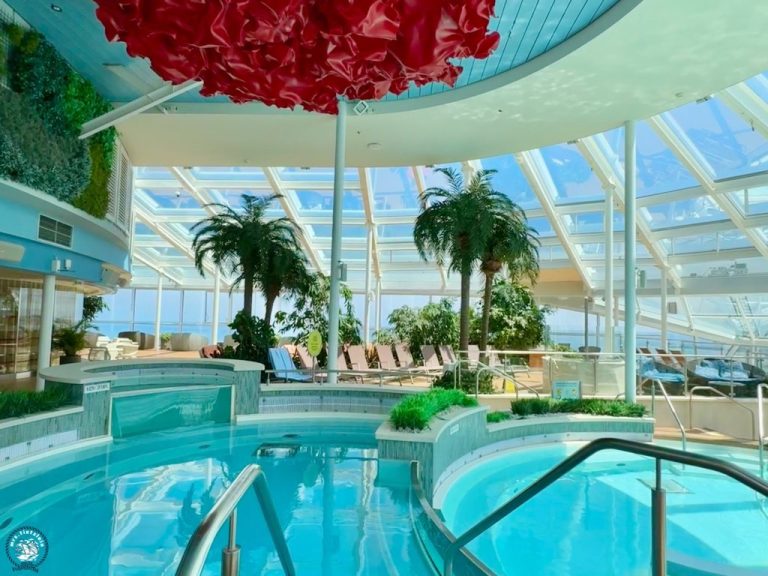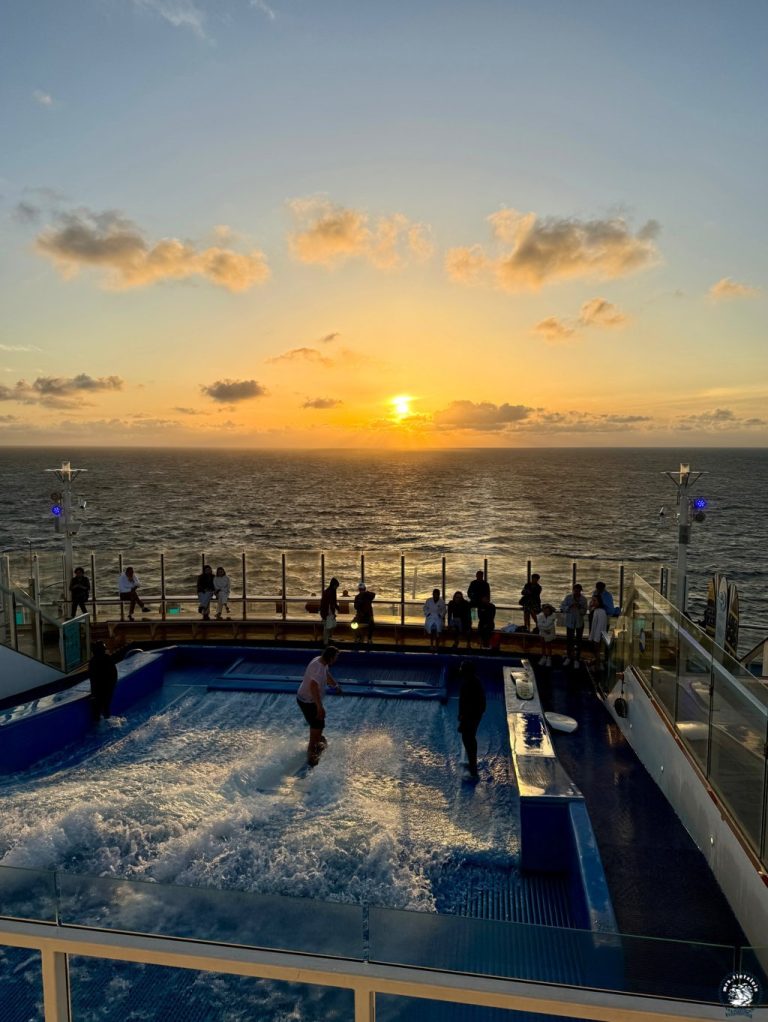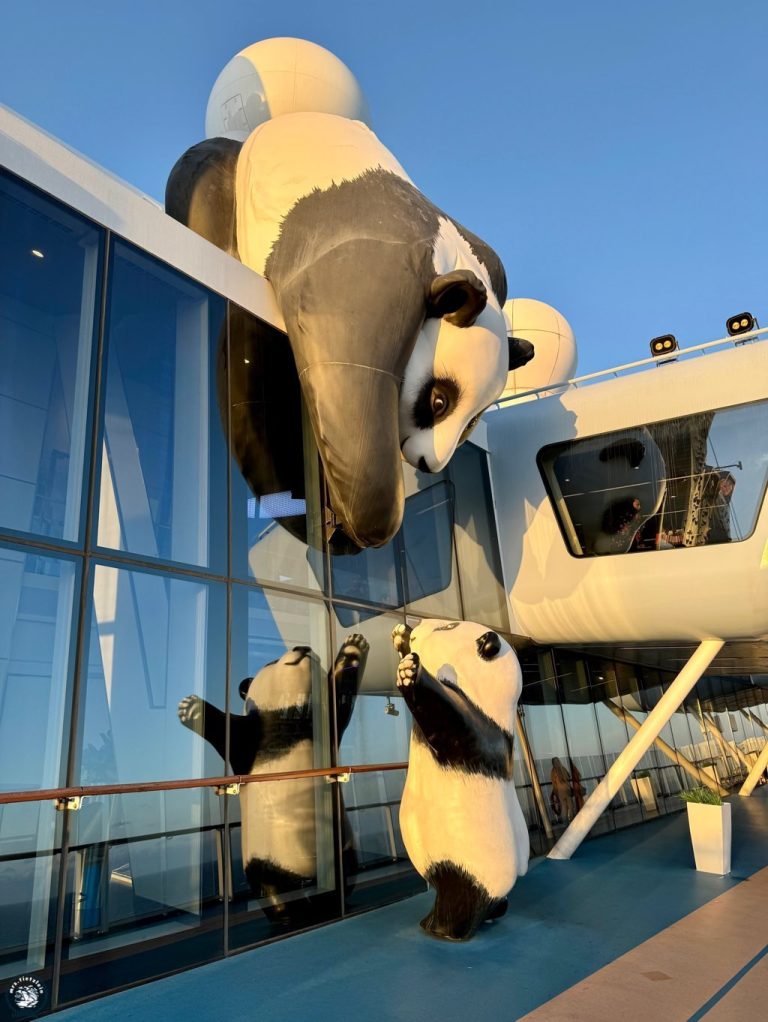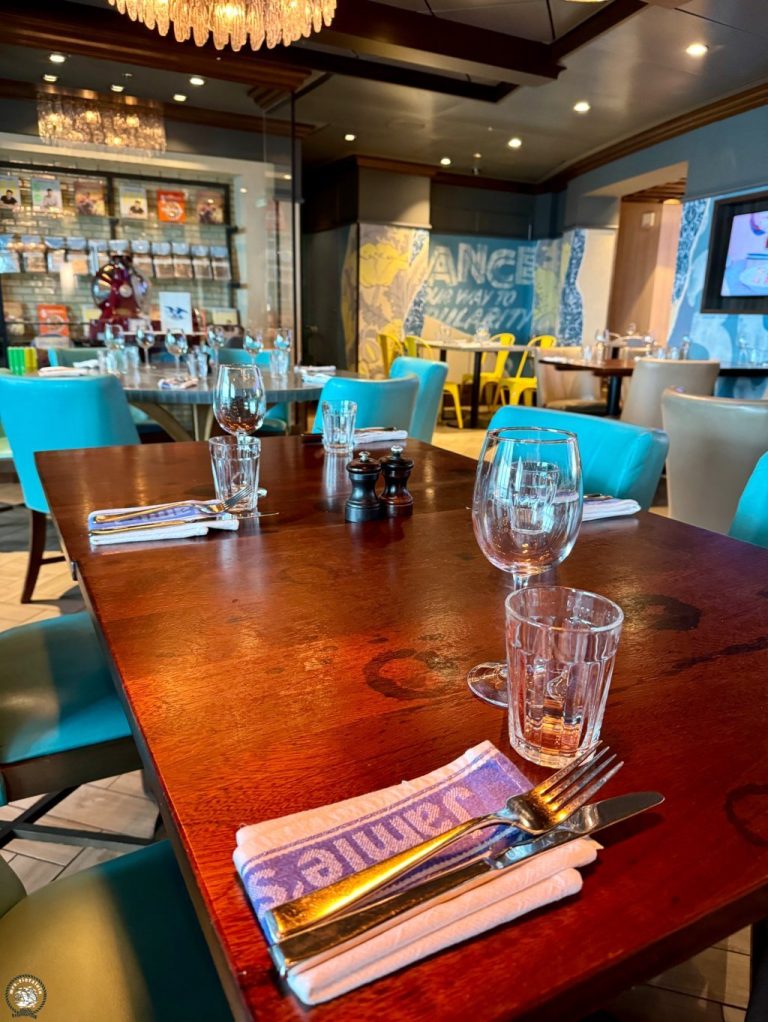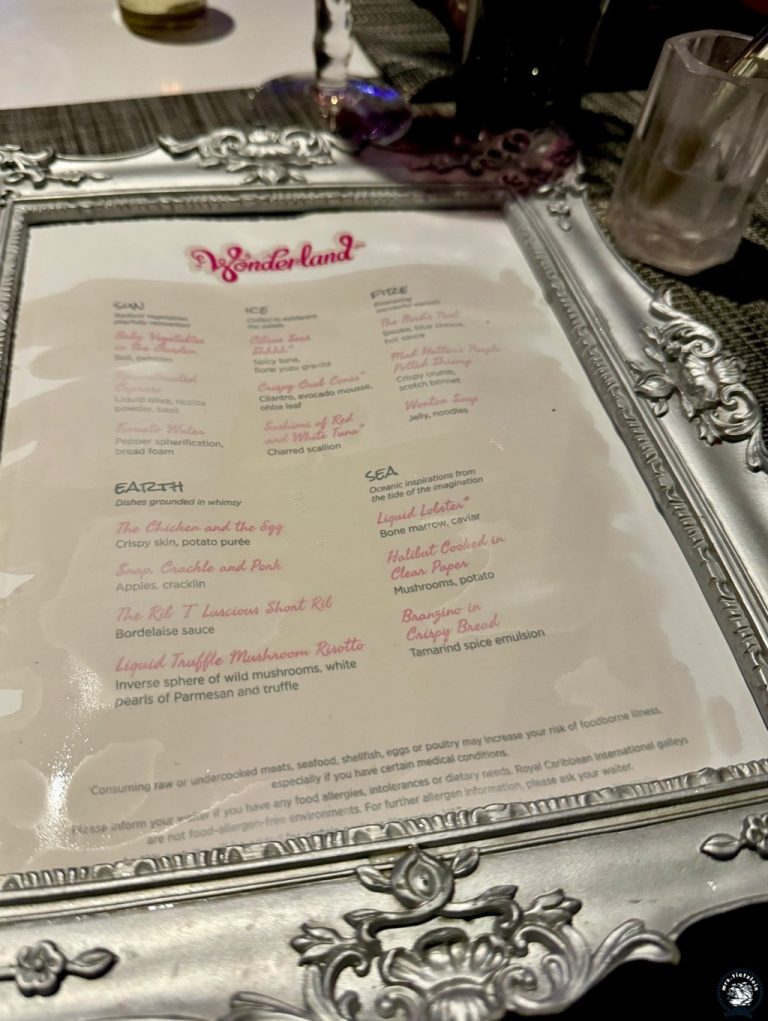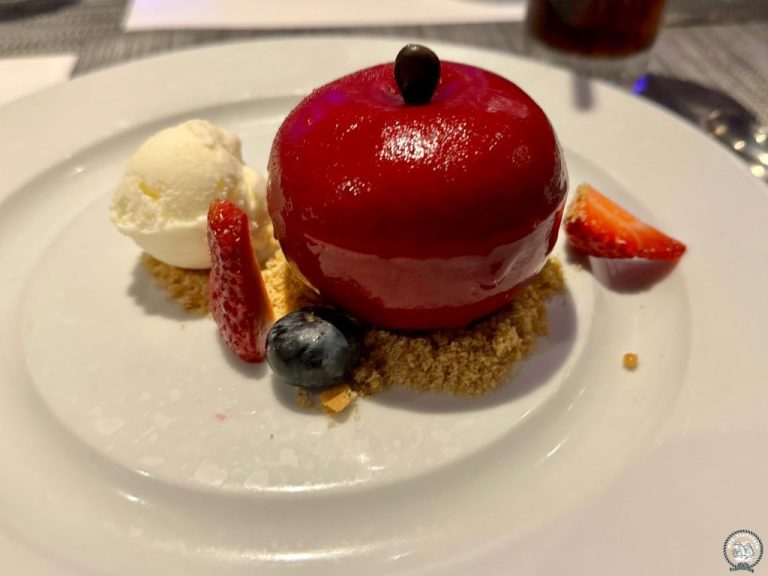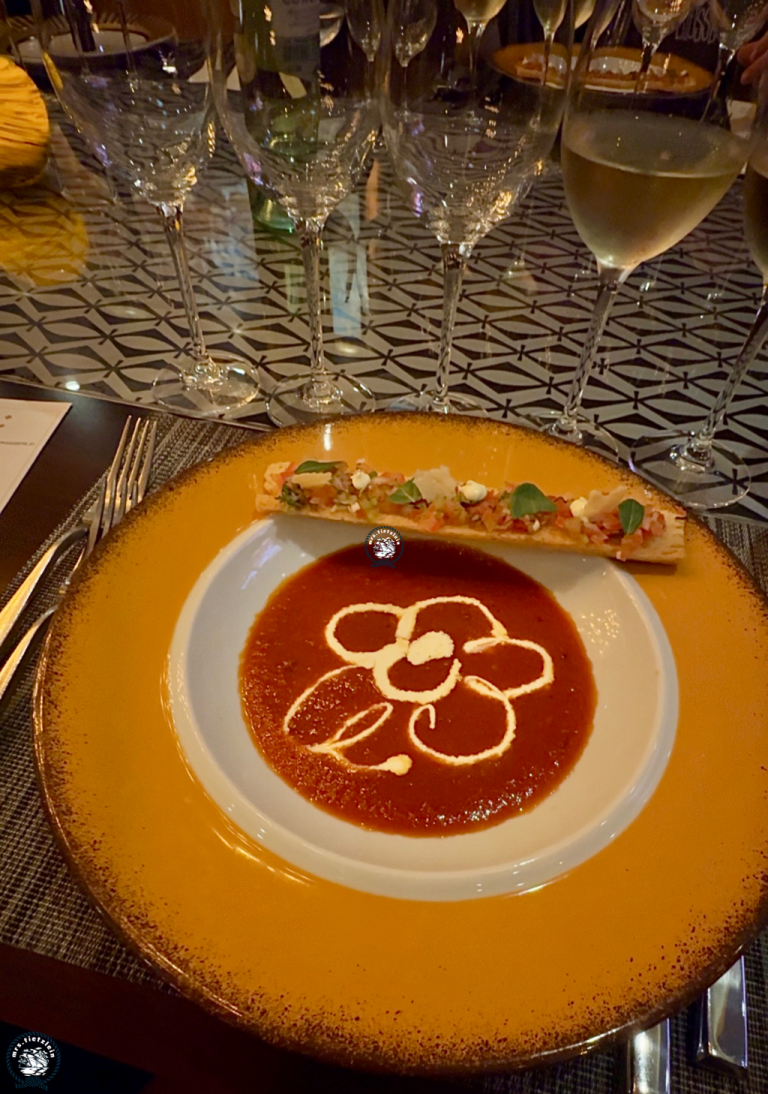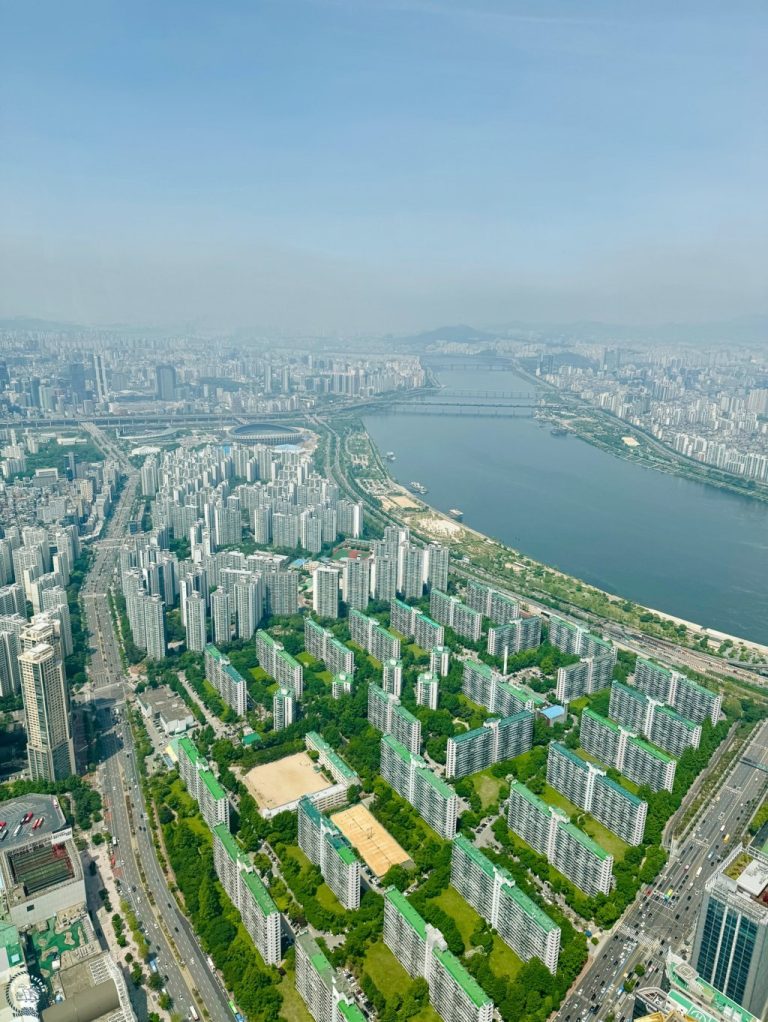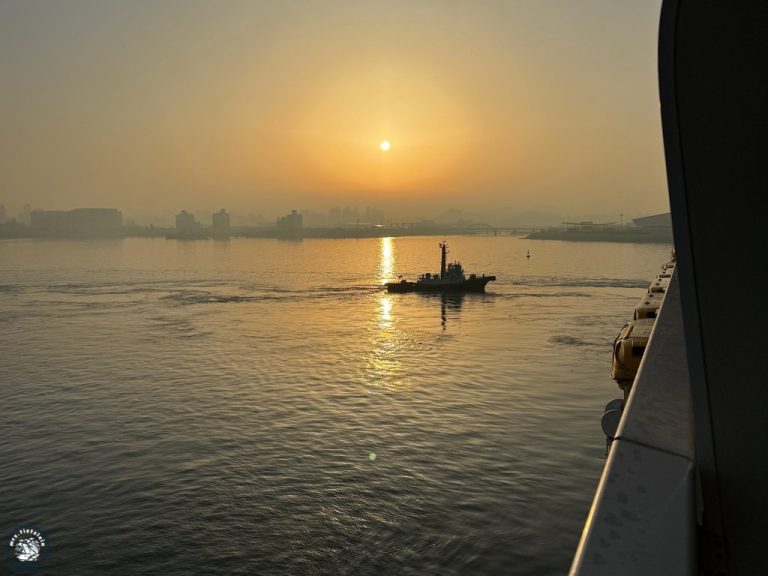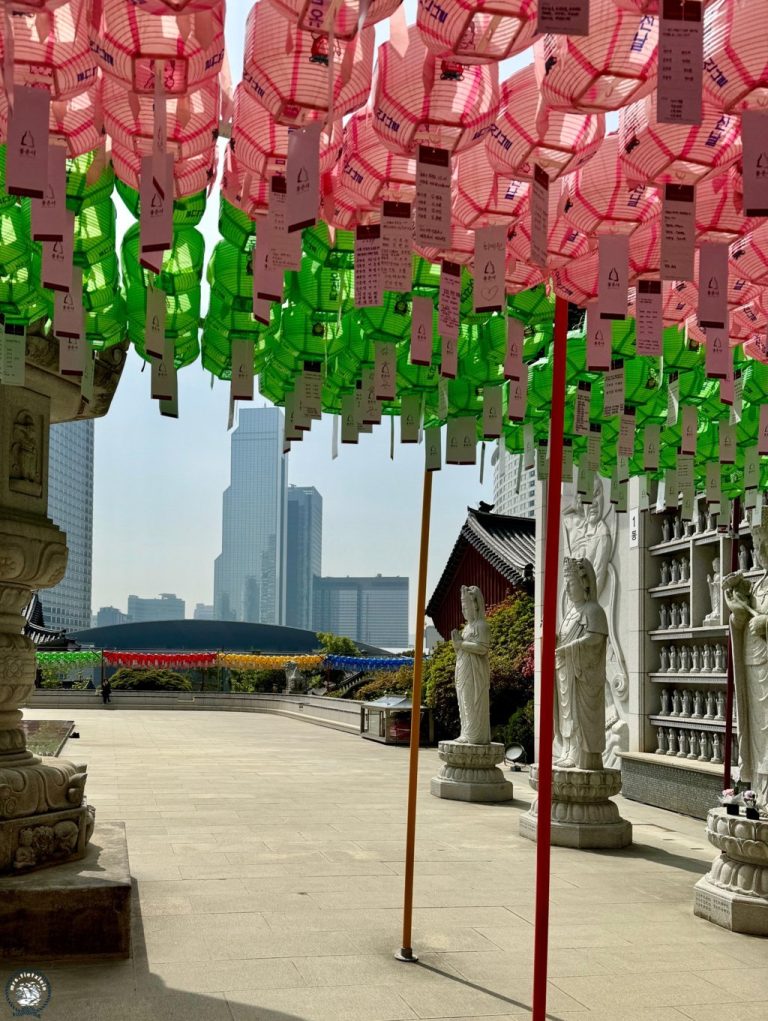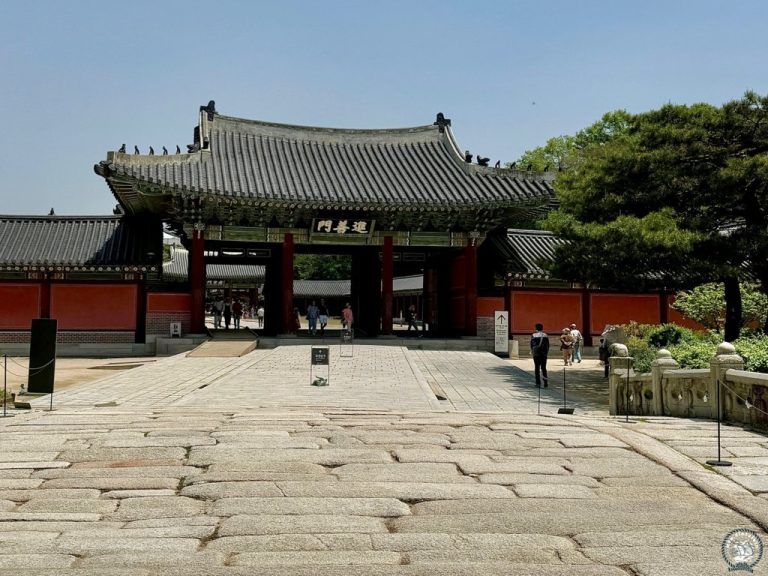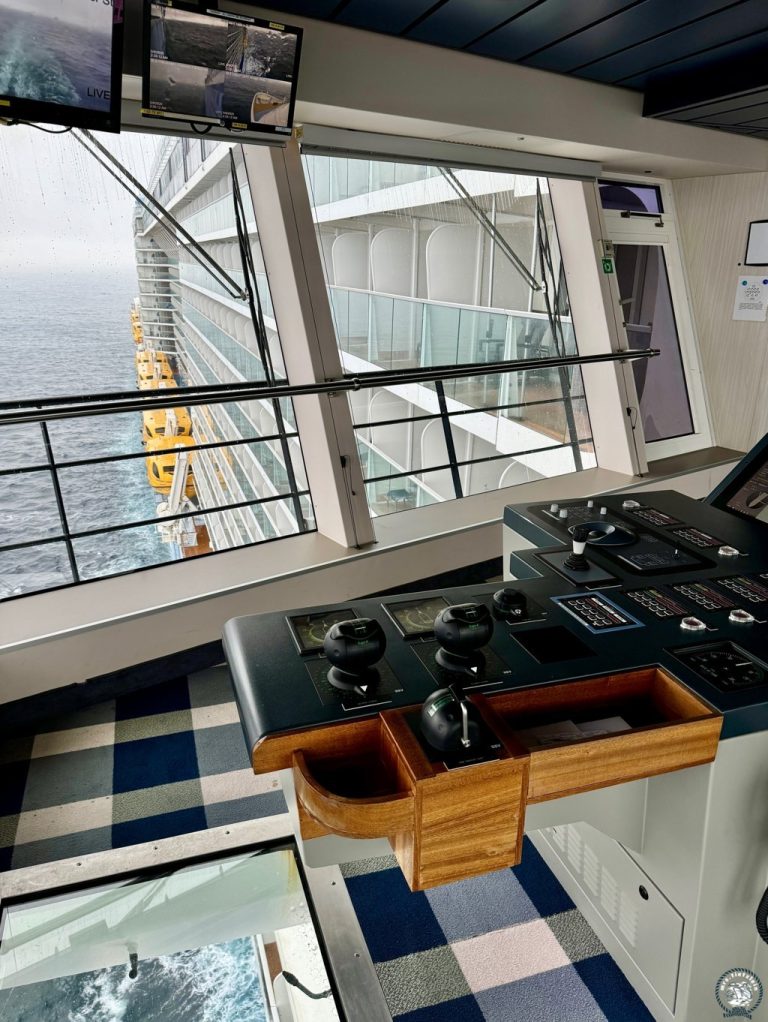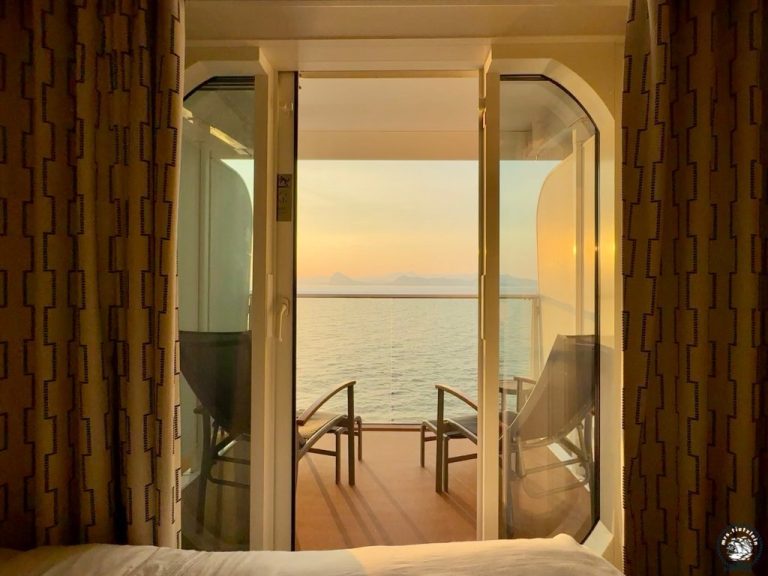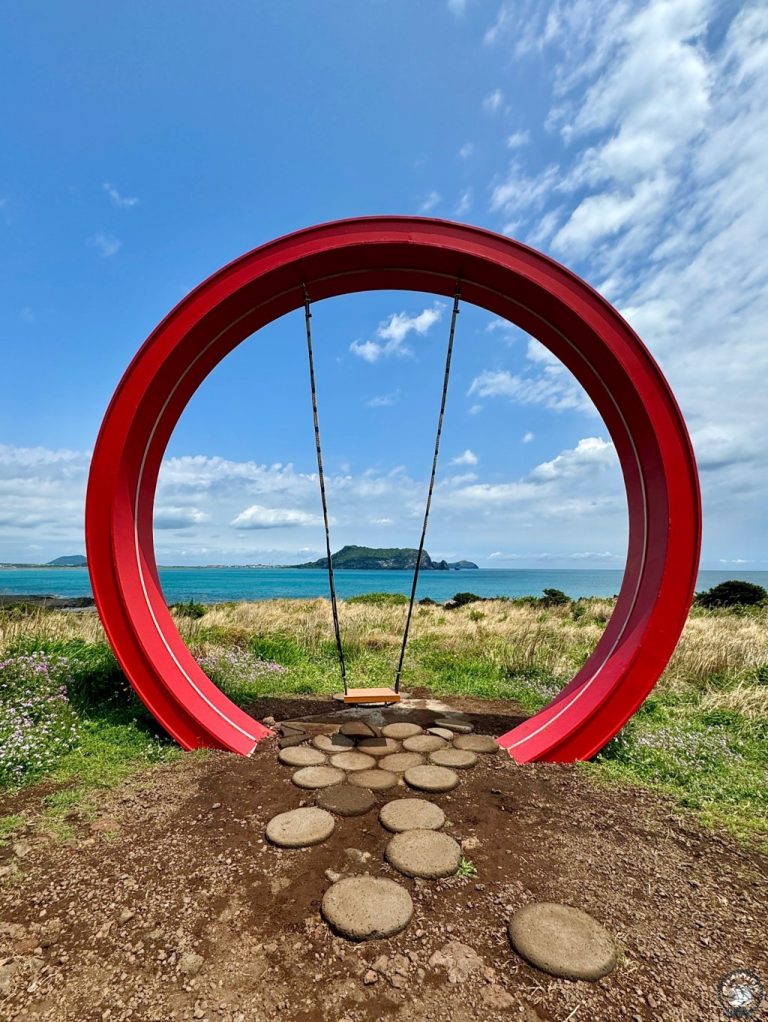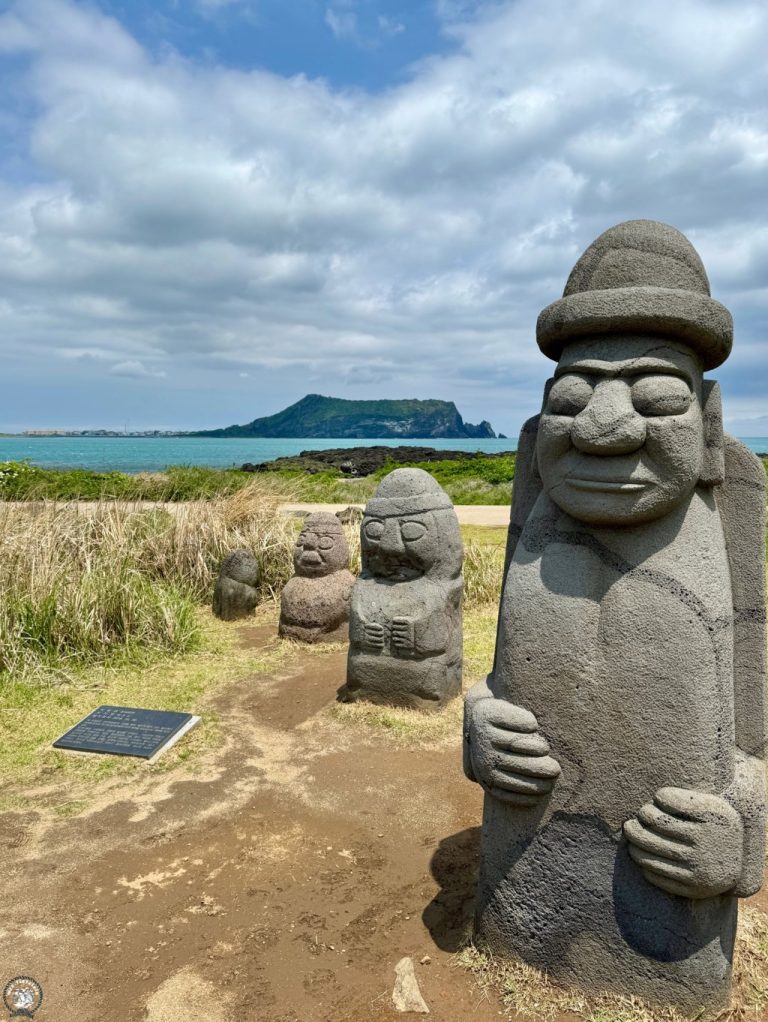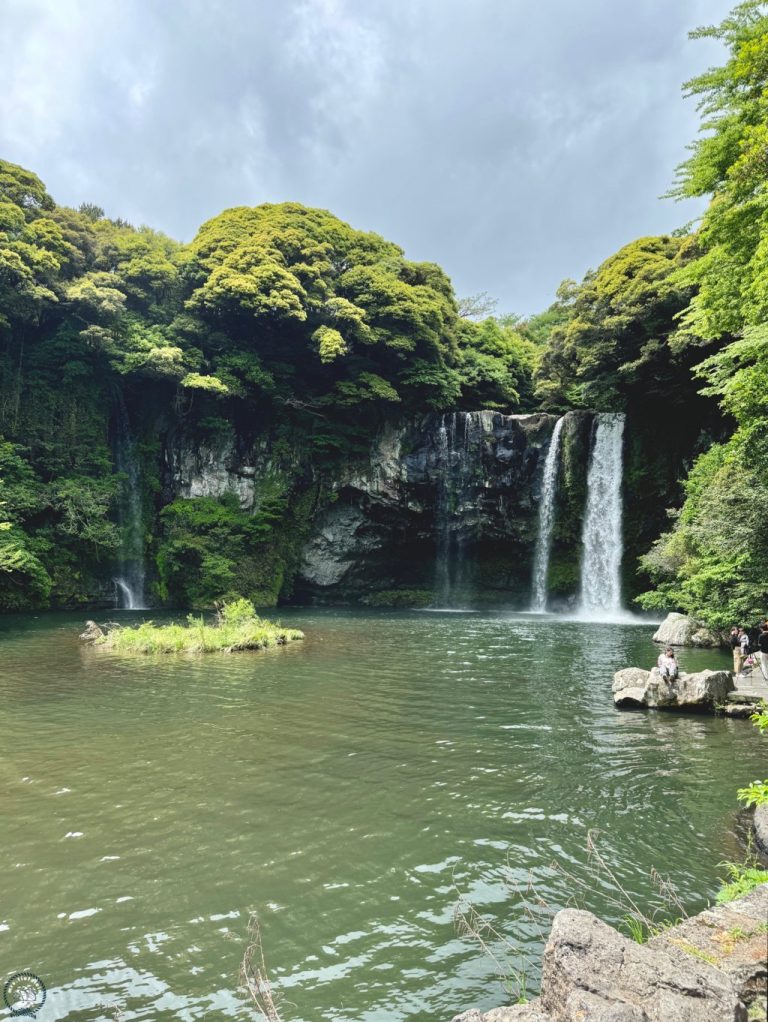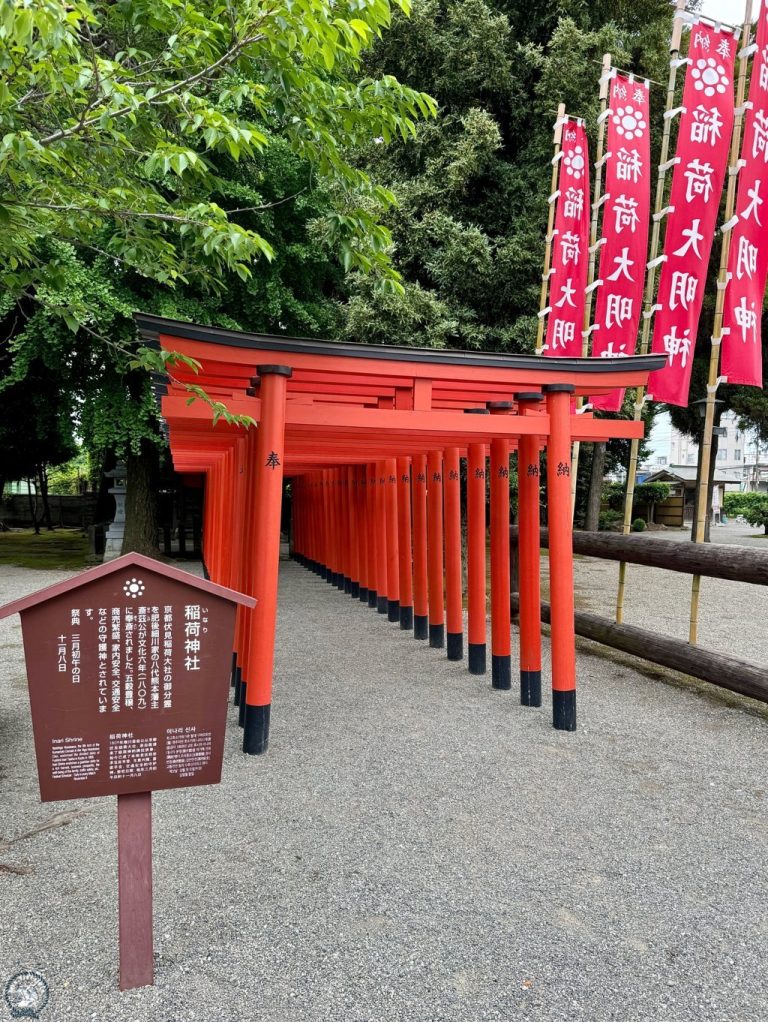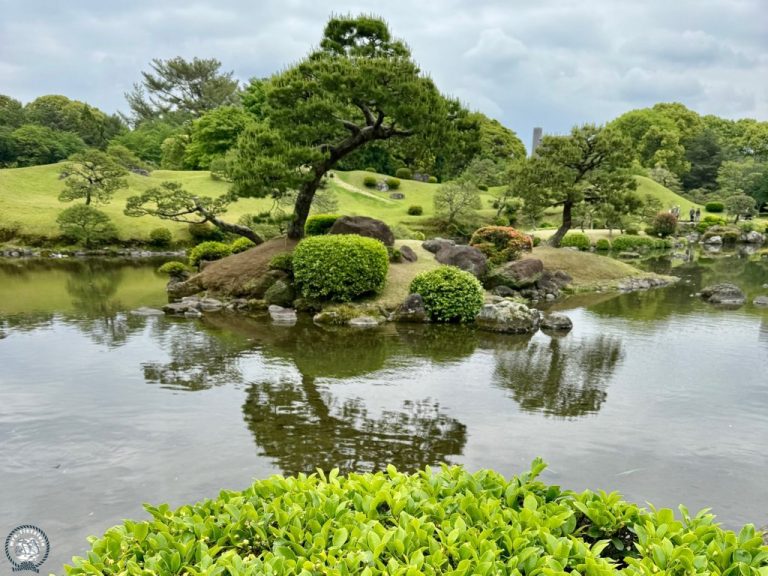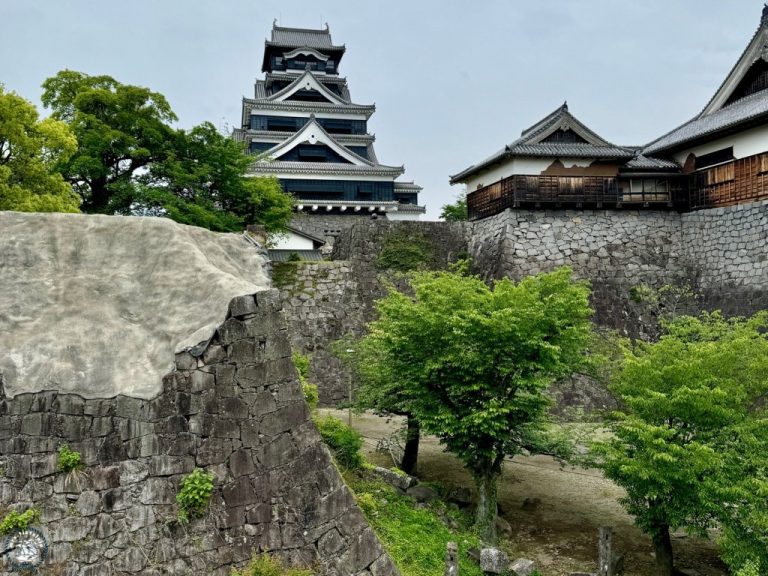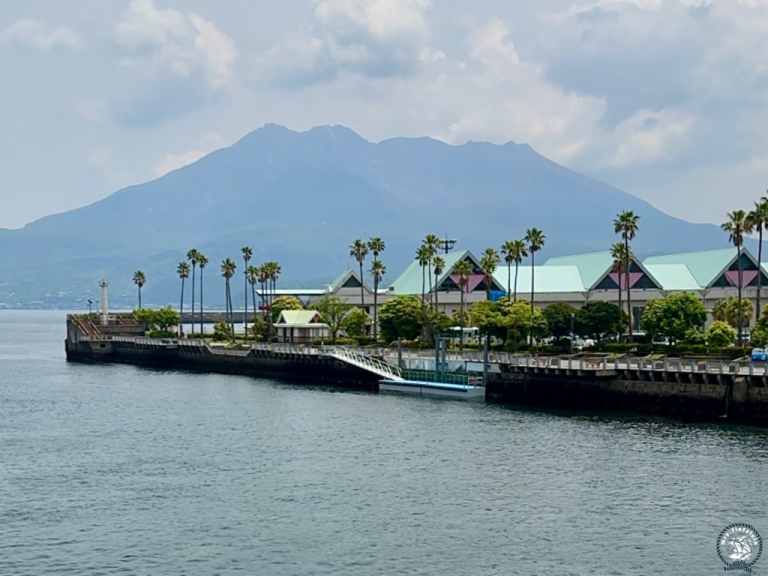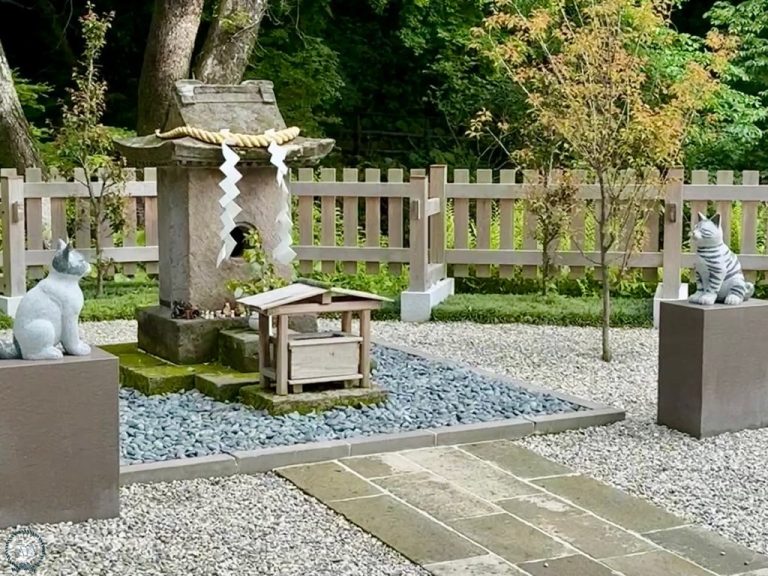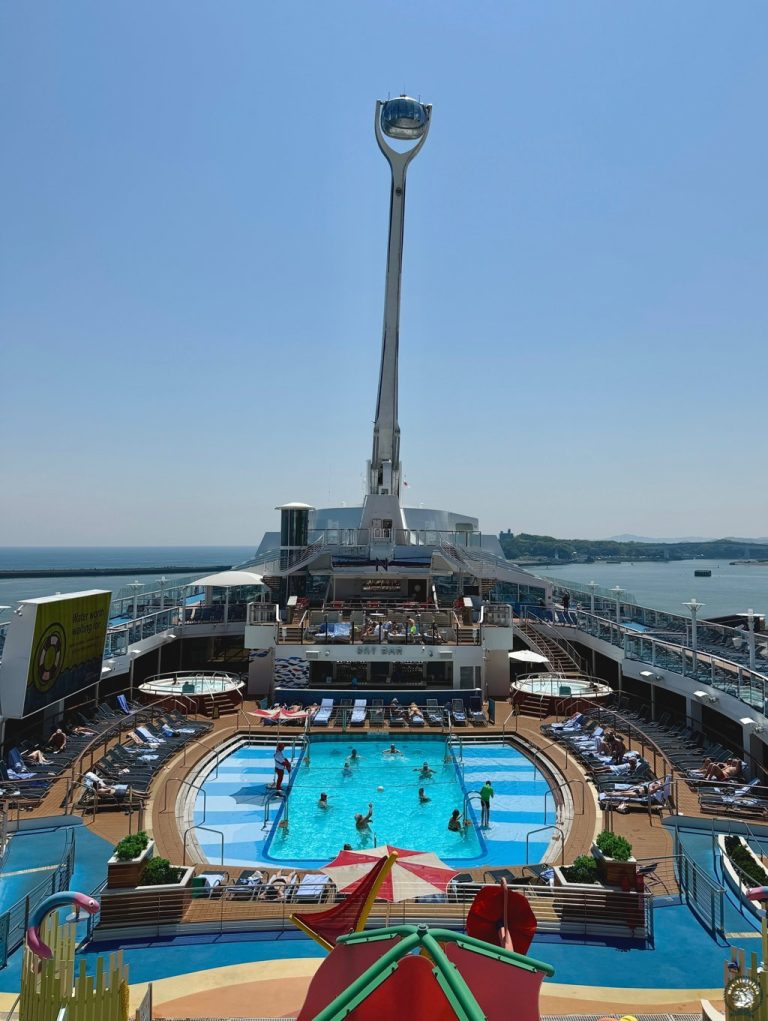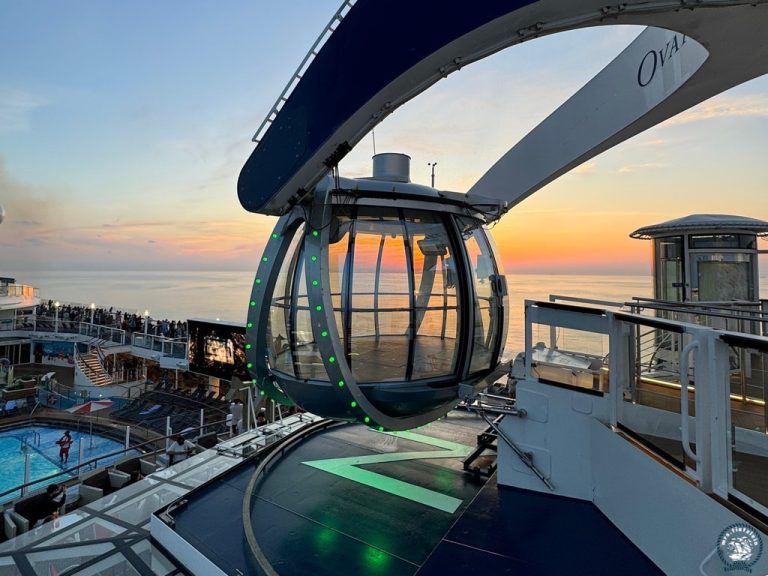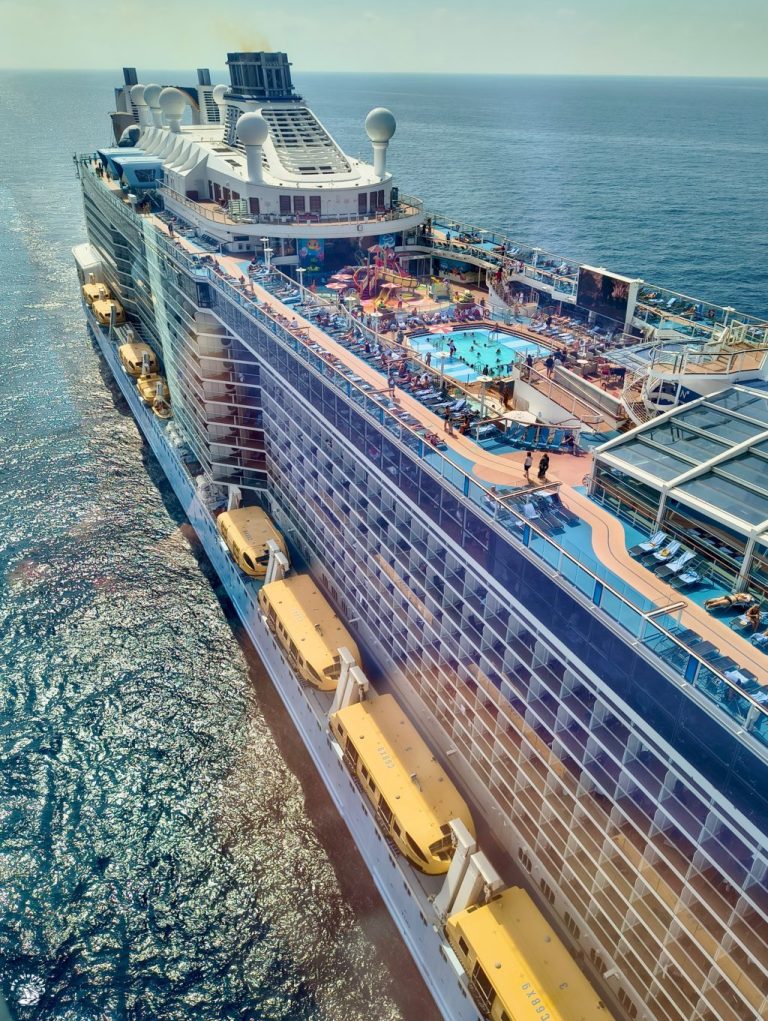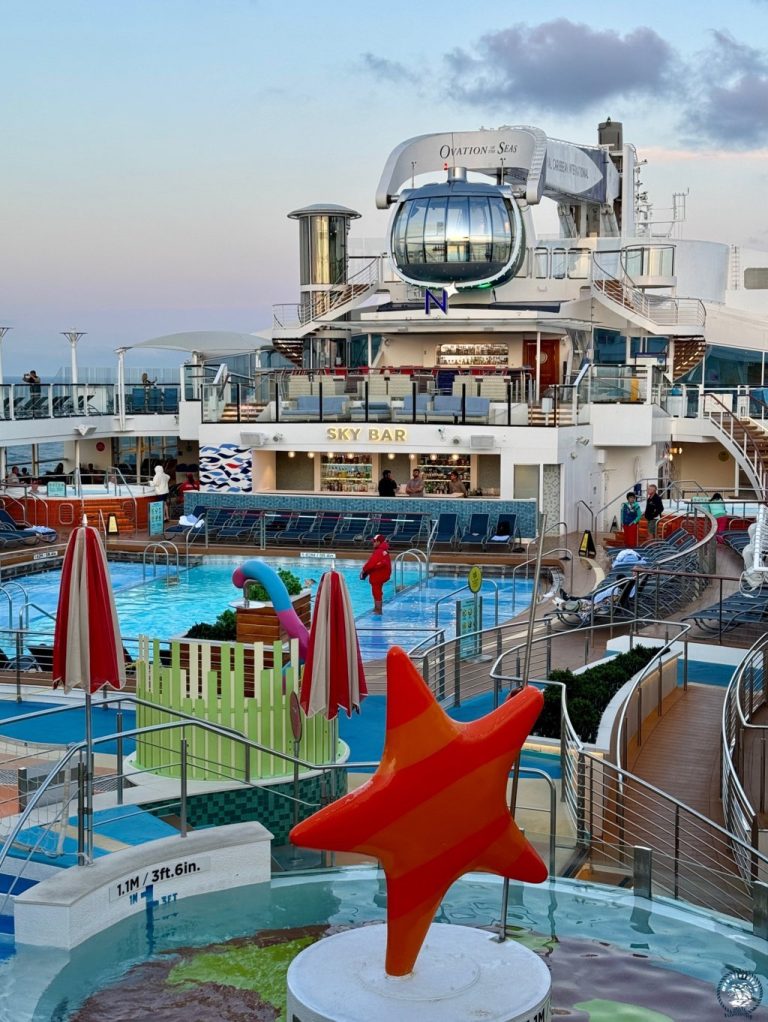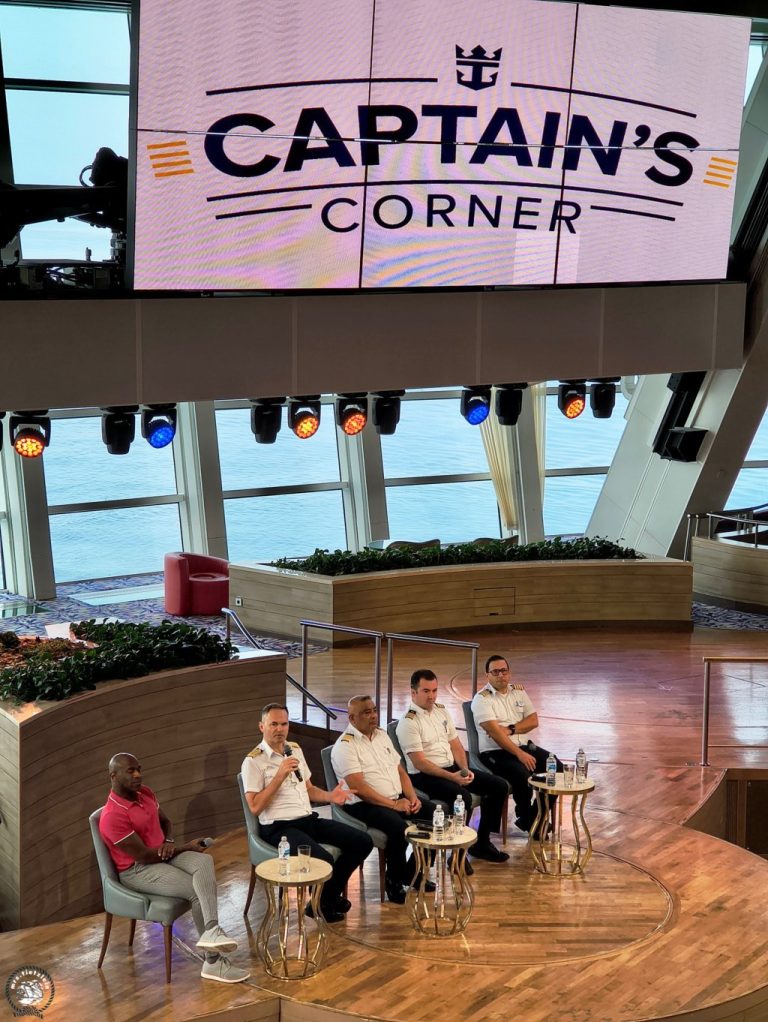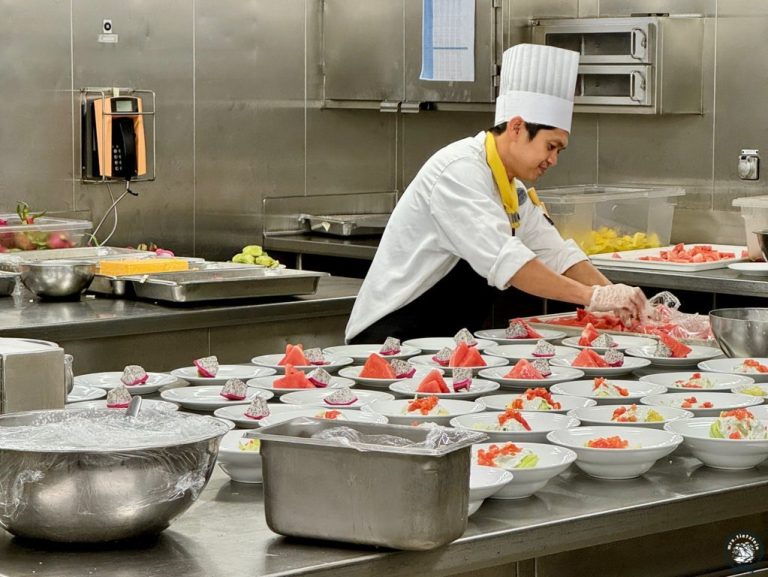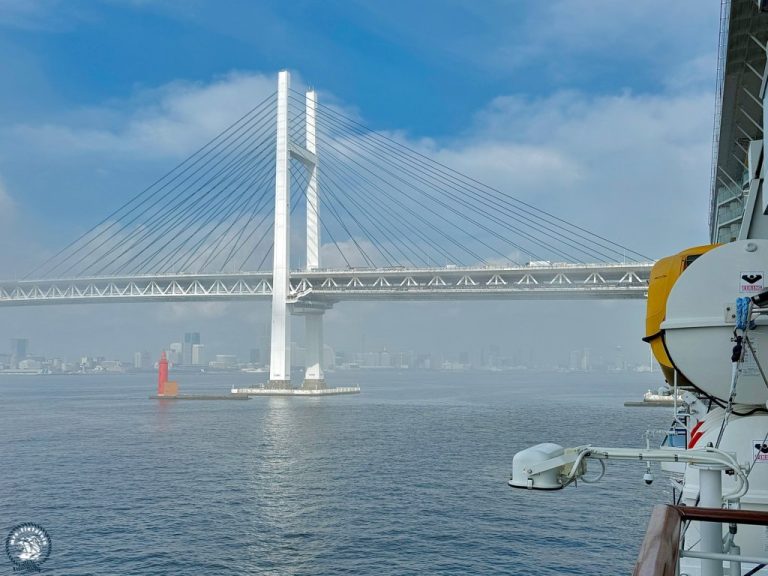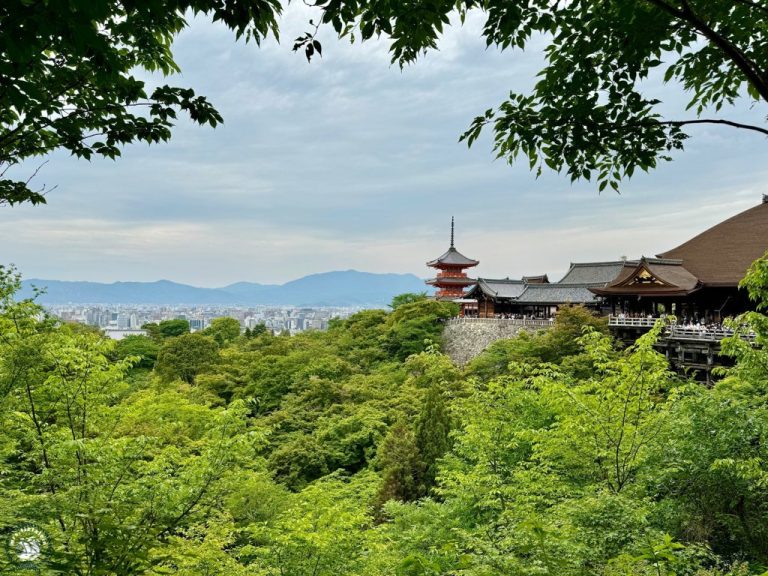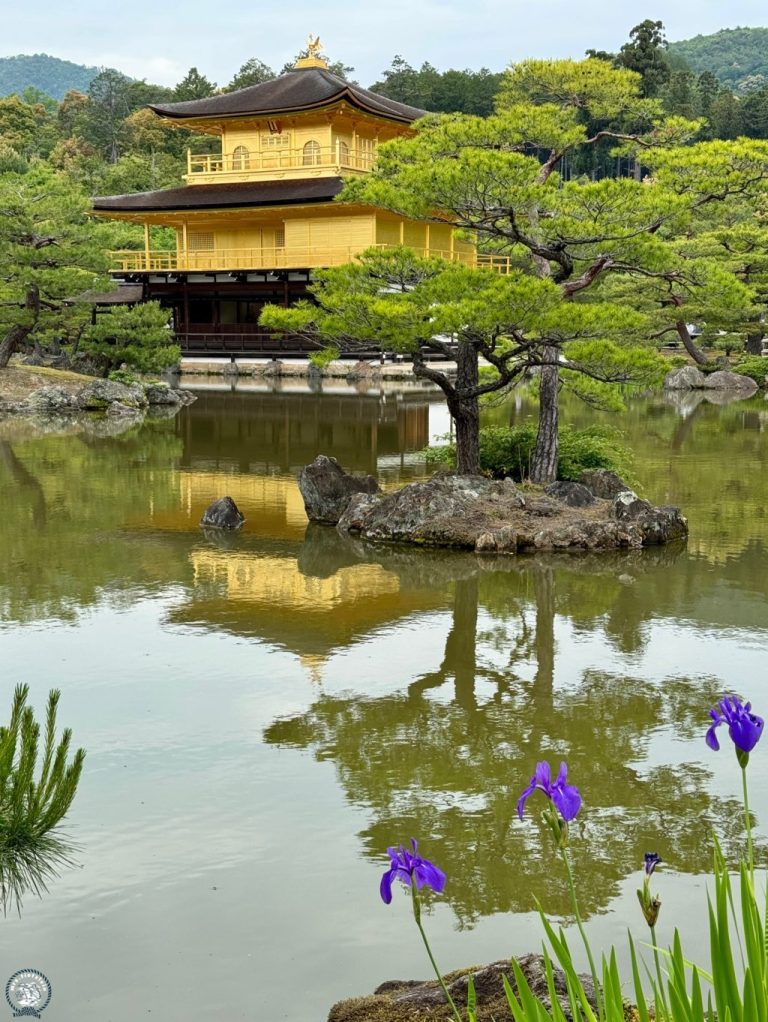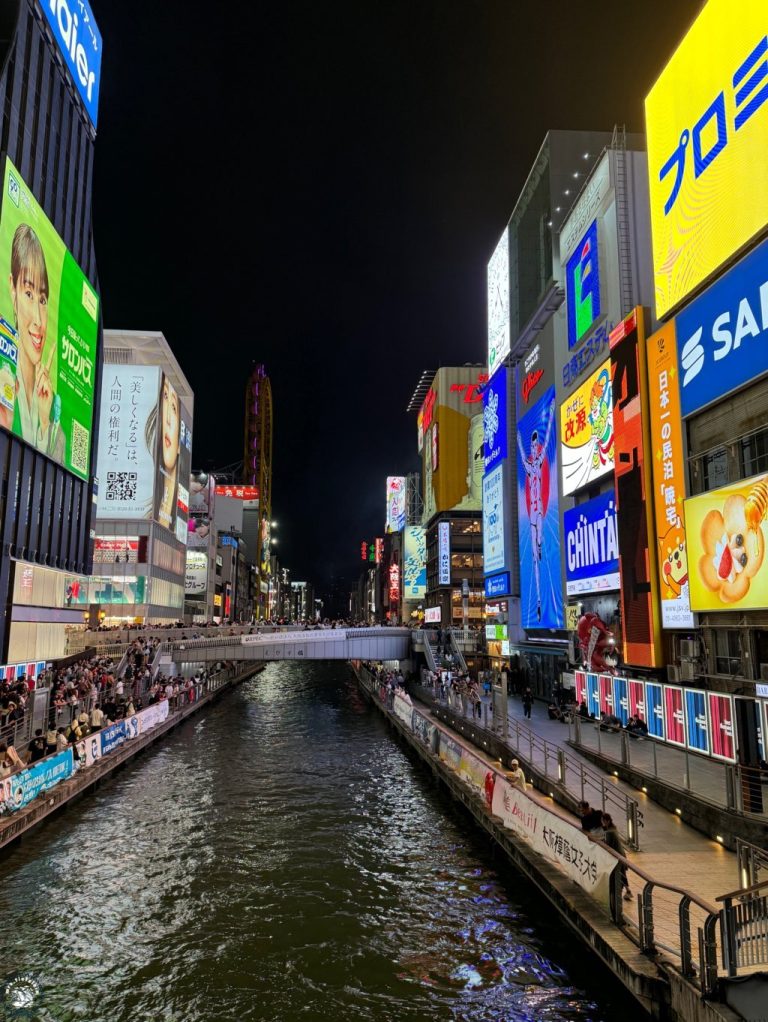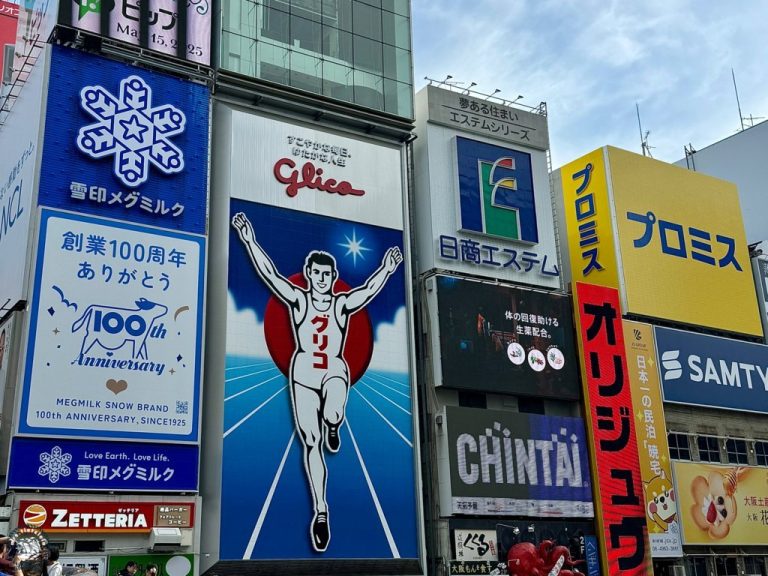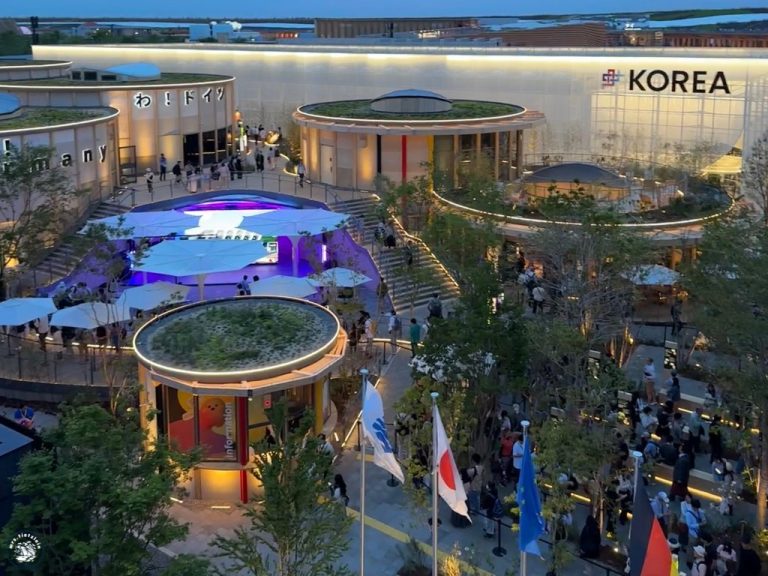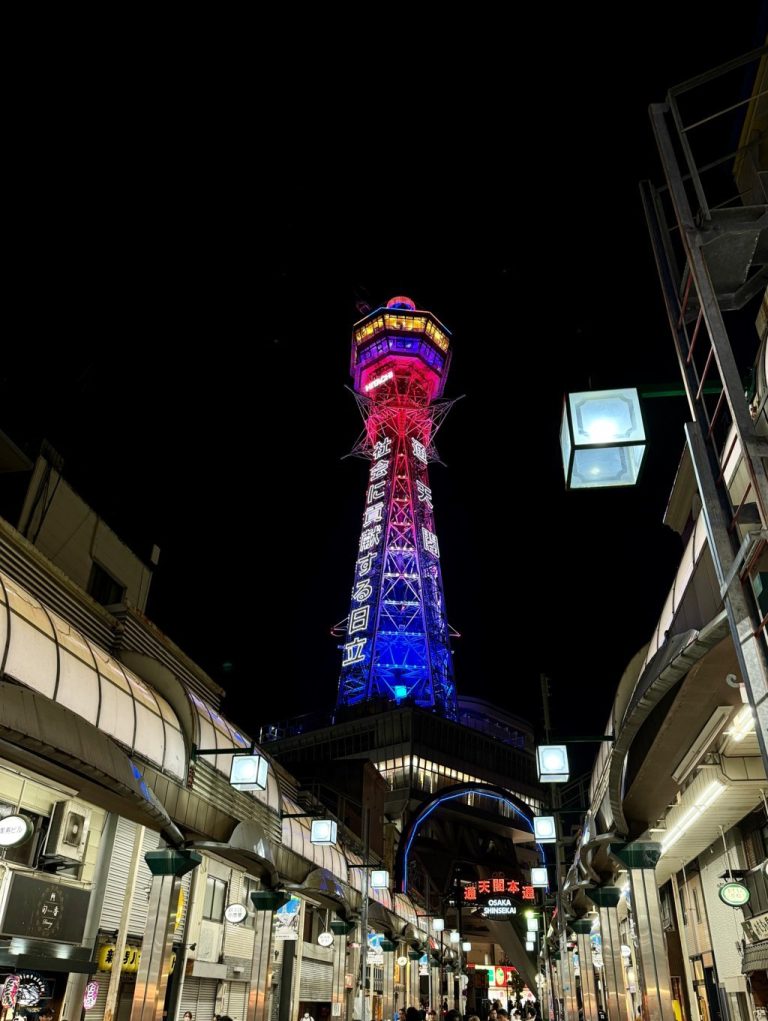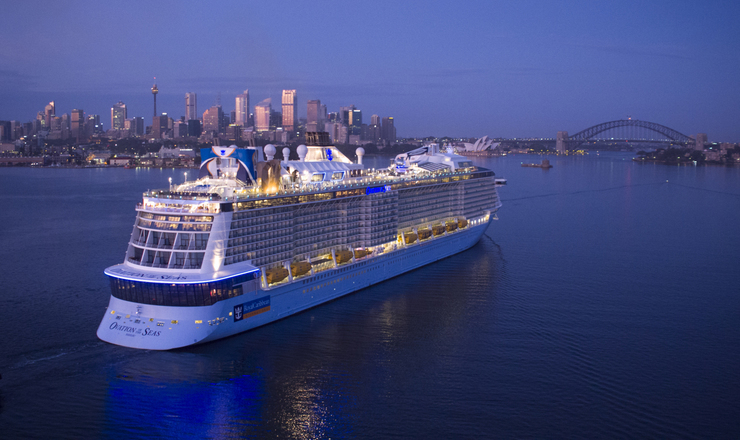Exploring cultures and modern cities aboard Ovation ots
Welcome aboard, fellow explorers! I’m Stefanie, a passionate cruise blogger from Germany with over a decade of experience and over 370 nights spent at sea. I’ve cultivated a deep-seated love for the maritime world and the privilege of immersing myself in the wonders of cruising, each voyage offering a unique tapestry of experiences and discoveries.
In May, I embarked on Ovation of the Seas in China, navigating the landscapes and cultural tapestry of South Korea and Japan. My excitement for this cruise had brought together a group of four adventurous souls from Germany and the USA. Our journey began with flights from Berlin, Munich and Houston to Beijing.
Join me as I recount this extraordinary voyage, discovering historic temples, dynamic cityscapes, serene shrines and unique ports of call.
OvationoftheSeas_Jeju
Beijing: First Impressions After Dark
Upon landing in Beijing, reunions ensued as our group settled into the Renaissance Beijing Capital Hotel, our home for the next three nights. In the evening, we went on a four-hour guided night tour through the Chinese capital. The tour began with a drive along the politically significant Chang’an Avenue, followed by a walk across Tian’anmen Square, just in time to witness the daily flag-lowering ceremony at sunset. We continued to Qianmen Street, a historic pedestrian shopping area lined with restored architecture from the Qing Dynasty. From there, we headed to the Olympic Green to explore the stunning night-time illumination of the Bird’s Nest (National Stadium) and the Water Cube (National Aquatics Center), both iconic structures from the 2008 Summer Olympics. Before returning to the hotel, we passed by the futuristic National Centre for the Performing Arts, also known as “The Giant Egg”, with its shimmering dome reflected in the surrounding water.
Beijing: City Highlights
In the morning, a pre-arranged private guide picked us up at the hotel for a full-day tour to explore some of the city’s most iconic landmarks. Our first stop was the Forbidden City, China’s former imperial palace of the Ming and Qing dynasties and one of the largest and best-preserved ancient wooden complexes in the world. With more than 600 years of history, it’s one of the finest examples of traditional Chinese palatial architecture. Our guide brought to life the intriguing stories of emperors, eunuchs and concubines who once inhabited these grounds.
Afterwards, we took a short stroll through one of Beijing’s histroric Hutong neighborhoods. A visit to a local teahouse followed, where we enjoyed a traditional tea tasting, sampled different varieties of Chinese tea and learned about the rituals of tea preparation.
In the afternoon, we continued to the Temple of Heaven, an UNESCO World Heritage Site. Built in the early 15h century, this architectural masterpiece was once used by emperors of the Ming and Qing dynasties to offer sacrifices and pray for good harvests. Later that evening, we ventured out on our own to explore the Central Business District, often referred to as Beijing’s “Manhattan” due to its modern skyline. A highlight was The Place, a popular shopping center, famous for its massive LED sky screen stretching across the open plaza.
Beijing_TiananmenSquare
Beijing_ForbiddenCity
Beijing_ForbiddenCity
Beijing_TempleofHeaven2
Beijing: The Great Wall of China
The third and perhaps most anticipated day of our Beijing stay took us beyond the city to one of the New Seven Wonders of the World – the Great Wall of China. Shrouded in fog and low-hanging clouds, the iconic site welcomed us with an almost mystical atmosphere. We explored the Mutianyu section, known for its breathtaking scenery and fewer crowds. Thanks to the chairlift ride, we were able to enjoy sweeping views as we ascended. Once on the Wall, we had two hours to walk along the ancient stone path, take in the landscape and learn more about the myths and realities behind the world’s longest man-made structure.
From there, our tour continued to the Summer Palace, a masterpiece of Chinese landscape garden design. As we strolled along the world’s longest painted corridor and around Kunming Lake, our guide introduced us to the opulent life of Empress Dowager Cixi. In the evening, we visited the modern China World Mall back in Beijing. It surprised with a full-sized indoor ice rink and a stunning night view of the futuristic CCTV Building.
TheGreatWallofChina
Beijing_CCTV
Beijing_SummerPalace_LakeKunming
Beijing_TempleofHeaven
Tianjin: Embarking on Ovation of the Seas
After three days in Beijing, it was time to head to the coast. The journey from China’s capital to the cruise port in Tianjin is surprisingly long – the drive took around 2.5 hours, covering a distance of nearly 170 kilometers. As we entered Tianjin, we passed through the city’s modern skyline and caught a glimpse of the Tianjin Eye, a giant Ferris wheel built over a bridge. The pre-booked private transfer ensured a hassle-free arrival for our group at the cruise terminal, setting the stage for our high-seas adventure.
We boarded Ovation of the Seas in the early afternoon and three of us returned to a ship we last sailed on in 2019 on a Transpacific Crossing from Honolulu. This Quantum-class ship was constructed by Meyer Werft shipyard in Papenburg, Germany and delivered to Royal Caribbean in April 2016. With an impressive length of 347 meters and 16 Decks accessible to passengers, it offers a vast array of experiences. As an avid cruise blogger, eager to uncover hidden gems and share insights, I couldn’t wait to embark on this 9-Night Best of South Korea and Japan voyage.
Once we settled into our staterooms on Deck 8, it was time to acquaint ourselves with the ship. Exploring the ship’s expansive interior, each corner of Ovation of the Seas promised something to delight everyone and also brought back memories to some of us. One of our first stops was the SeaPlex, the largest indoor activity complex at sea. A signature of all Quantum-Class ships is a mascot mounted outside this venue. On Ovation of the Seas, it’s an adorable pair of climbing pandas: a mama and her baby. Inside, the versatile space transforms into a bumper car arena, basketball court or event space depending on the time of day.
Afterwards, we headed into the Solarium located on Decks 13 and 14 forward. The adults-only oasis features a cascading pool, whirlpools and comfortable loungers. The enclosed glass canopy allows natural light to filter in, creating a bright and airy ambiance to take in panoramic views over the bow. After nearly 20000 steps each day in Beijing, this was the perfect space to unwind. The Solarium also holds a hidden gem: access to the bridge wings observation decks, located on Deck 13. Here, we gained a vantage point akin to that of the Captain’s perspective from the bridge below, allowing us to enjoy the Sail-Away from a privileged position. During sunset, we watched the port of Tianjin slowly drift away, waving back at terminal staff, who had come out to see us off.
We had pre-booked the Unlimited Dining Package for the cruise, so for our first night on board, we kicked things off with a Specialty Dining experience at Chops Grille, Royal Caribbean’s signature American steakhouse. We wrapped up our evening with live piano music in the Schooner Bar on Deck 5.
OvationoftheSeas_Solarium
OvationoftheSeas_Flowrider
OvationoftheSeas_MascotsPandas
Day at Sea: Sailing through the Yellow Sea
Today, we were en route from Tianjin to Incheon, cruising through the Yellow Sea, which lies between mainland China and the Korean Peninsula. In the morning, we attended the Top Tier Event, hosted by the Captain and senior officers in Two70. This gathering celebrates the most loyal members of Royal Caribbean’s Crown & Anchor Society, the line’s frequent cruiser program. On this sailing, there were 205 Diamond, 88 Diamond Plus and 7 Pinnacle Club members aboard. Afterwards we were in invited to the Cheers with an Officer lunch, which is exclusively hosted for Crown & Anchor Society members with 340 and more points.
Later, we returned to Two70 for the Two70 Experience, a special demonstration that revealed the technology behind this unique venue located at the aft of Decks 5 and 6. By day, the space offers 270-degree panoramic ocean views. At night, the floor-to-ceiling windows transform into a video canvas, powered by 18 high-definition projectors creating a 12K Vistarama screen. A troupe of six agile robotic screens glides on ceiling-mounted tracks, synchronizing with music and projections. The stage itself includes multiple platforms and trapdoors, allowing for smooth scene changes and dramatic entrances. This showcase was a great way to understand just how versatile the multimedia spectacle unique to Royal Caribbean’s Quantum-class ships can be.
Dinner took us to Jamie’s Italian, the Speciality Restaurant by celebrity chef Jamie Oliver, is located on Deck 5 and included in the Unlimited Dining Package. The atmosphere felt like a rustic Italian trattoria with a modern twist. We enjoyed freshly made pasta and one of Jamie’s signature starters, the plank of cured meats and cheeses.
OvationoftheSeas_JamiesItalian
OvationoftheSeas_Wonderland
OvationoftheSeas_Wonderland_ForbiddenApple
OvationoftheSeas_ChefsTable
Incheon: Iconic Seoul Adventure
We arrived just as the first light broke over Incheon, watching from our balcony as the pilot boat approached to guide us into the port during sunrise. After a quick breakfast, we headed out early for our full-day Royal Caribbean shore excursion. The drive into the South Korean capital took nearly 90 minutes, offering glimpses of bridges, riverbanks and districts. With over 9 million residents, Seoul isn’t just the largest city in the country, it’s also the political, economic and cultural epicenter of South Korea.
Our first stop was Bongeunsa Temple, located right in the heart of Seoul’s modern Gangnam district. This centuries-old temple houses more than 3000 Buddhist scriptures and a 91-foot stone statue of Maitreya, the Future Buddha. We walked beneath colorful lanterns and the temple’s calm atmosphere offered a strong contrast to the dynamic city just outside its gates.
Next, we visited the Seoul Sky Observatory at the Lotte World Tower. Standing at 555 meters, this is South Korea’s tallest building. The world’s fastest double-deck elevator, recognized by the Guinness Book of World Records, whisked us up to the 117th floor in under a minute. We explored the observatory’s multi-level experience: walking across the world’s highest glass-floor observation deck on the 118th floor, stepping outside to the open-air Sky Terrace on the 120th floor and soaking in 360-degree views of Seoul.
From modern heights to royal history: our visit continued with UNESCO-listed Changdeokgung Palace, one of the best-preserved of the five grand Joseon-era palaces. The mix of stone gates, wooden halls and centuries-old gardens revealed a more contemplative side of Korean history. The famous rear garden, known as Huwon, was still lush with spring greenery and felt like a hidden world tucked away in the center of the capital.
A late lunch brought us into a restaurant for a traditional Korean BBQ. Pork slices were grilled right at the table and paired with kimchi, rice, vegetables and dipping sauces. Afterwards we made our way to our final stop, the National Museum of Korea, where we walked through centuries of Korean art, history and archaeology.
This was my first time in South Korea – country number 51 on my personal list – and yet it managed to surprise me with a kind of detail I didn’t find in guidebooks. Throughout the day, I noticed something I had never seen before: large sun umbrellas installed at pedestrian crossings. While waiting for the green light, we stood in the shade, protected from the sun.
After the 10-hour shore excursion, we returned to the ship among the last guests to reboard. As we set sail from Incheon, we passed under the colorful lit Incheon Bridge, South Korea’s longest cable-stayed bridge. Later we observed the harbor pilot being picked up as the lights of the city disappeared behind us.
SeoulSkyObservatory
Incheon
Seoul_BongeunsaTemple
Seoul_ChangdeokgungPalaceComplex
Day at Sea: Captain’s Invitation to the Bridge of Ovation of the Seas
When I pulled back the curtain to our balcony that morning, I was met with a thick wall of fog. Every 90 seconds, the ship’s horn echoed across the Yellow Sea, while we sailed south towards the island of Jeju. Mid-morning I was honored to be personally invited by Captain Espen Been to visit the bridge. He took an incredible amount of time to personally show me around, explaining the ship’s instruments, sharing insights into navigation and even letting me peek into his private office. He also explained our exact course on digital maps, not only to Jeju but also for the days ahead through Japan. And then came a once-in-a-lifetime moment: Captain Espen allowed me to sound the ship’s horn not once, but twice! To make the sound even more impressive, he opened the glass window on the bridge, allowing us to hear the horns echo in full force.
After all that excitement, our group met at Chops Grille. Located on Deck 5, the venue offers an upscale yet relaxed atmosphere with dark wood interiors. On sea days, the Specialty Restaurants open their doors for lunch as well, a great opportunity to make the most of the Unlimited Dining Package. With satisfied appetites and the afternoon ahead of us, we turned to Ovation’s many onboard offerings. From adrenaline-pumping activities like RipCord by iFLY skydiving simulator and Flowrider surf simulator to serene retreats like the Vitality Spa and Solarium, there was no shortage of ways to relax and recharge onboard Ovation of the Seas on a Day at Sea. We enjoyed a relaxed afternoon in the Solarium, which, on a rainy sea day, showed its true strength.
That evening, we stepped into a whole different world: Wonderland, Royal Caribbean’s most imaginative Specialty Restaurant. Inspired by Alice’s adventures, the entire restaurant invites to forget everything you know about traditional dining. The menu, invisible at first, only becomes readable when we brushed it with a paintbrush dipped in water. It is divided into five elements – sun, ice, fire, earth and sea – with appetizers inspired by the first three and main courses drawn from the latter two. Each course is like a piece of edible art:
We started with Tomato Water, followed by Crispy Crab Cones and the playful Bird’s Nest, which arrived under a cloche filled with smoke that was lifted at the table to reveal a delicate, nest-like arrangement of flavors. Other appetizers were equally whimsical, like the Mad Hatter’s Purple Potted Shrimp or a theatrical Wonton Soup poured tableside. For main courses we ordered the inventive The Chicken and the Egg and the flaky, flavorful Branzino wrapped in crispy bread. For dessert, we tried two of their signature options: the Mystical Mushroom Garden, featuring three mushroom-shaped treats each with a different texture and taste and The Forbidden Apple, a picture-perfect crafted creation made of raspberry crémeux, brown butter crumbles and served with yogurt ice cream so smooth, creamy and tangy, that I can honestly say: it was the best ice cream I had on the entire ship. And what would a trip to Wonderland be without a little mixology magic? We couldn’t resist the Cheshire Cat Cosmo. The glass arrived filled with pink cotton candy and as the waiter poured the cocktail over it, the candy dissolved and turned into a drink. We wrapped up the evening in the Music Hall, located on Decks 3 and 4, where a live band played late into the night everything from classics to funky dance hits.
OvationoftheSeas_Bridge
OvationoftheSeas_BalconyView
Seogwipo: Exploring the Eastern and Southern Coast of Jeju Island
Jeju Island, often referred to as the “Hawaii of South Korea”, welcomed us with green landscapes and a volcanic coastline. This UNESCO World Heritage site is shaped by lava, wind, water and deep-rooted tradition. Today, we had pre-booked a full-day tour to explore the eastern and southern coast and our private guide was waiting for us inside the cruise terminal.
Our first stop, after a scenic 90-minute drive, was Seongsan Ilchulbong, also known as “Sunrise Peak”. This tuff cone was formed by volcanic eruptions thousands of years ago and is one of the island’s prominent landmarks. Just a short drive later, we arrived at Seopjikoji, a scenic coastal area known for its lava rock formations. We took a walk along Jeju’s iconic wind-swept landscape and discovered the popular Seopjikoji Grand Swing, offering a direct view of Sunrise Peak in the distance.
In the early afternoon, we explored Cheonjiyeonpokpo and Jeongbang Waterfall, two waterfalls located in the southern part of the island. Cheonjiyeonpokpo is hidden in a lush forest and the cascading water flows into a basin, while Jeongbang waterfall drops directly into the sea. The final stop before returning to the port was Jusangjeolli Cliff, a coastal lava formation consisting of hexagonal basalt columns. The formation was created by lava flows from Hallasan Mountain cooling rapidly upon contact with the ocean. These columns are Jeju’s answer to the Giant’s Causeway, but with a Korean twist.
Throughout the day, we couldn’t miss the presence of Jeju’s most iconic locals: the Dol Hareubang, These stone grandfather statues are traditionally carved from volcanic rock. With their hands resting on their bellies and wise expressions on their faces, these figures have been standing guard for centuries and are thought to bring good luck, especially if you touch their nose.
After over 160 kilometers on the road and countless impressions later, the tour concluded at Gangjeong Port in Seogwipo. Shorty after we set sail to Japan and the ship passed along the southern coast of the island. While I watched the fading coastline of South Korea during sunset, crew members practiced inside the RipCord by iFLY wind tunnel, a skydiving simulator that offers to experience the feeling of free fall. The transparent chamber is located at the aft of the ship, just above the FlowRider on Deck 16. In the evening, the Royal Theatre, located on Decks 4 and 5 forward, hosted the evening’s Headliner Show: Duck Cameron, a comedy magician. The performance combined classic illusions with lighthearted audience interaction.
Jeju_ SeopjikojiGrandSwing
Jeju_DOLHAREUBANGandSeongsanIlchulbong
Jeju_ CheonjiyeonpokpoWaterfall
Kumamoto: Discovering the Heart of Kyushu
Nestled on the southern coast of Kyushu island, Kumamoto welcomed us to explore its history and cultural heritage. Our arrival brought back memories of our previous stop here with Spectrum of the Seas in August 2023. Back then it was an unscheduled call due to Typhoon Lan, which forced a last-minute rerouting from Osaka. After completing Japan’s immigration formalities via face-recognition at the terminal, three of us joined Royal Caribbean’s “Kumamoto Highlights” shore excursion, while one member of our group opted to stay onboard.
We began with a scenic drive to Suizen-ji Jōju-en Garden, a Japanese landscape garden initiated in the 17th century by feudal lord Hosokawa Tadatoshi and designed to represent the 53 stations of the Tōkaidō road, which connected Tokyo with Kyoto during the Edo period. Key features include tiny incarnations of several of the famous landmarks that occupy this stretch, such as Mount Fuji, Lake Biwa and a shrine, modeled after Kyoto’s Fushimi Inari Taisha. Next, we continued to Kumamoto Castle, one of Japan’s most iconic fortresses. We learned about the castle’s history and that the city’s crowning jewel stands as a testament to the resilience and ingenuity of its inhabitants. First built in the early 1600s, parts of the complex were damaged by the 2016 earthquake, but extensive reconstruction efforts have restored much of its grandeur. Just below the castle, the excursion included free time at Josaien, a cultural village with traditional Japanese music and dance performances hosted at its square. We browsed local crafts, souvenirs and sampled regional specialties, like Onimori Soft-Serve Strawberry Ice Cream.
After returning back onboard, we ate at Amber & Oak, the English-style pub located on the Royal Esplanade on Deck 4. As part of our Unlimited Dining Package, we received a $20 daily credit to use at à la carte venues such as the pub, Fish & Ships or Vintages. The menu featured a variety of bar bites, including German soft pretzels, pub pickles and the Royal Pub Burger. A selection of desserts was also available, for example a fried cheesecake.
Despite intermittent rain throughout the late afternoon and evening, the local dock staff of Kumamon Port Yatsushiro lined the quay to wave us off with l glow-sticks accompanied by traditional music playing over speakers.
In the evening, we watched “Spectra’s Cabaret”, an original production created by Royal Caribbean exclusively for Two70. This visually stunning show combined live singing, avant-garde visuals, dazzling choreography and innovative technology, showcasing the incredible talent and creativity of the performers and production team.
Kumamoto_ Suizen-jiJojuen2
Kumamoto_ Suizen-jiJojuen2
Kumamoto_Castle
Kagoshima: Japan’s Southern Gateway
Today three of us went on the Royal Caribbean shore excursion “Kagoshima Highlights”, while one member of our group wanted to explore Kagoshima independently. Our first stop was Sengan-en Garden, a 17th-century Japanese landscape garden originally built for the Shimazu clan. Situated on a hillside overlooking Kagoshima Bay, it features manicured lawns, ornamental ponds and sweeping views of Sakurajima – the active volcanic island that dominates the azure waters of Kagoshima Bay. Amid its bamboo groves and small streams lies a charming gem: the Nekogami Jinja. Legend says seven cats accompanied Shimazu troops to Korea, but only two returned and these were enshrined here. The cat shrine is a popular spot for cat lovers for hanging ema plaques to pray for the health of their feline companions.
We continued to Kagoshima Honko Port, where we boarded a ferry for a short crossing to Sakurajima. Once its own island, a major eruption in 1914 linked it to the Ōsumi Peninsula via hardened lava flows. After disembarking the ferry, we explored the Arimura Lava Observatory, situated on Taisho-era lava fields at the volcano’s southern base. A paved 1 km path offered panoramic views of Minamidake crater and Kinko Bay, while interpretive signage explained the island’s ongoing geological transformation.
After returning by ferry and coach to the Kagoshima Cruise Terminal, we strolled through the Marine Port Park, shaded by camphor trees, characteristic of the region’s subtropical climate. We were back on board in the afternoon and made use of the $20 dining credit included in our Unlimited Dining Package at Fish & Ships on Deck 14, selecting the fried lobster tail.
Later, the farewell from Kagoshima was memorable: Captain Espen sounded the ship’s horn multiple times, while port staff lined the quay, waving orange flags and cheering us on, accompanied by traditional taiko drumming. As our ship sailed away from Kagoshima, leaving behind the silhouette of Sakurajima volcano, the sun slowly began to set. The route toward Kōchi took us past several small volcanic isles, offering a scenic backdrop as the sun dipped behind Southern Japan.
Kagoshima_Sakurajima
Kagoshima_Sakurajima2
Kagoshima_Sengan-en-Garden
Kōchi: Zoo Adventure and Leisure Onboard
Located on the southern coast of Shikoku, Japan’s smallest main island, Kōchi welcomed us with blue skies and sunshine. Our group once again split up: two members stayed onboard to enjoy the ship’s amenities, while the other two ventured out to explore the Noichi Zoological Park, located about 40 minutes from the port. This zoo follows the concept of displaying animals in environments that closely resemble their natural habitats. Highlights include a savannah with giraffes and zebras against the backdrop of Mt. Sanpō and a tropical forest home to gibbons and chimpanzees.
By mid-afternoon, we all met back onboard and took a ride on the North Star, Royal Caribbean’s signature glass observation capsule. While docked, it simply ascends and descends rather than swinging out over the ship’s edge, but it was still a fantastic way to see the harbour and the hills of Shikoku from above. The Basic Experience is included in the cruise fare, though advance reservations are essential, as slots fill quickly. With the sun still beaming, we made the most of it and spent time at the outdoor pool on Deck 14, sipping cocktails and soaking in the warm breeze.
That evening we had a reservation at Chef’s Table. Although our Unlimited Dining Package covered the Speciality Restaurants, this particular experience required a small supplement. The experience for just a few guests began with pre-dinner champagne and personalized menus were already waiting for us when we arrived. Each of the six courses was introduced by the chef personally, with background on the ingredients and inspiration behind the dish. The sommelier introduced the paired wine, where it came from, its tasting notes and why it was selected to complement that particular dish.
The set menu began with a Scallop Carpaccio, dressed in yuzu vinaigrette and topped with crispy quinoa. It was paired with a crisp Attems Pinot Grigio from Italy, which lifted the citrus notes of the dish. Next came the Smoked Tomato Soup with garlicky focaccia bread, poured tableside and topped by the chef with a drizzle of crème fraîche. It was served with a Conundrum White Blend from California, adding balance. The third course, a Maine Lobster Salad, paired juicy pineapple and hearts of palm with a surprising vanilla dressing and it worked perfectly with the earthy Clearwater Cove Sauvignon Blanc from Marlborough, New Zealand. For the fourth course, we were served Roasted Branzino, accompanied by grilled zucchini, sweet peppers, lemon confit and a touch of pesto. The pairing: a La Crema Chardonnay from Sonoma Coast, buttery yet restrained. Next followed a Grilled Filet Mignon on a creamy truffle potato purée, with asparagus and a deep bordelaise sauce. Paired with a Sequoia Grove Cabernet Sauvignon from Napa Valley, this was the richest course. Then as dessert was served “The World“. Each guest received a chocolate sphere, that was melted tableside as the chef poured warm sauce over it, revealing a rich core of peanut butter ganache, Valrhona chocolate mousse and salted caramel gelato. To pair this finale, a bartender appeared and crafted a Bittersweet Truth – a salted caramel espresso martini – explaining each ingredient as he added it. The interactive elements brought the experience to a close, with both taste and presentation perfectly aligned. After dinner, the fun continued at the 70’s Disco Inferno in Two70, a retro dance party packed with energy, glittering costumes and blink-lit rings tossed into the cheering crowd. The cast brought the era to life with iconic moves and a disco-heavy soundtrack. We ended the evening with a walk around Deck 15 under a clear sky, taking in the glow of the full moon.
OvationoftheSeas_Kochi_NorthStar
OvationoftheSeas_NorthStar_sunset
Day at Sea: Behind-the-Scenes of Ovation of the Seas
Our final Day at Sea offered one last chance to soak in everything this ship has to offer. I joined the exclusive Backstage Tour of the Royal Theatre, hosted for Crown and Anchor Society Diamond and above members. It offered the possibility of stepping behind the curtain and getting a rare look behind the scenes of the ship’s entertainment world: stage design, lighting, costume racks and tech.
Later, two of us joined the ship’s executive chef team for a tour of the galley, offering insights into the inner workings of the ship’s expansive dining operations. From the provisioning areas to the hot kitchen line, we followed the flow of ingredients through a culinary operation that serves thousands of meals a day to guests. Along the way, the chef explained how menus are planned, quality remains consistent, dietary needs are managed and food waste is minimized. Afterwards, we all met in Two70, where Captain Espen hosted the Captain’s Corner. It was a Q&A format and guests were able to ask anything about navigation, weather, fuel consumption, route planning and the ship’s operations.
Late lunch took us to Izumi, located on Deck 5. Known across the Royal Caribbean fleet for its fresh, high-quality Asian cuisine, Izumi specializes in sushi and Japanese-inspired hot dishes. On Ovation of the Seas, this Speciality Restaurant features a clean, modern design, with subtle Japan accents, offering both table seating and a sushi bar. Included in our Unlimited Dining Package was the prix fixe menu, which provided a selection of sushi and hot items.
In the afternoon, we boarded the North Star Extended Experience, joined by Cruise Director Ricky Matthews. This time the observation capsule swung over both sides of the ship, unlike during port stops, where it only moves vertically. The panoramic views of the ship from a height of 300ft. above sea level were spectacular, with nothing but endless Pacific Ocean sparkling all the way to the horizon.
As dusk approached, the sky glowed in hues of orange and pink. We witnessed a gorgeous sunset, as the sun dipped right into the ocean with no clouds on the horizon. The evening kicked off with a Farewell Balloon Drop on the Royal Esplanade. Balloons floated down over the crowd as music played and guests danced.
Throughout our cruise, we enjoyed a diverse array of dining options due to the Unlimited Dining Package. Specialty Restaurants like Wonderland transported us to a whimsical world of imaginative dishes with playful presentations, while at Chops Grille, we savored perfectly cooked steaks and succulent seafood in an elegant setting. For our final dinner, we returned to Jamie’s Italian, our favorite Specialty Restaurant on this ship, where we’ve dined more often than anywhere else onboard.
OvationoftheSeas_NorthStar_ExtendedExperience
OvationoftheSeas_OutdoorPool
OvationoftheSeas_CaptainsCorner
OvationoftheSeas_GalleyTour
Yokohama: Disembarking Ovation of the Seas
In the early morning light, we docked at Daikoku Pier located next to Yokohama Bay Bridge. At 860 meters in length, the cable-stayed bridge connects two major cargo piers and spans the entrance to Tokyo Bay. After a final breakfast, our group shrank from four to three. Our friend from the U.S. stayed onboard for Ovation’s next voygage: the Transpacific Crossing to Los Angeles, where the ship will spend the summer season.
Disembarkation was seamless – no lines, no waiting. From the terminal, we caught a taxi to Shin-Yokohama Station, where we boarded the Nozomi 233. This is the fastest category of Shinkansen on the Tokaido Line, reaching speeds up to 300 km/h. The ride to Shin-Osaka Station took just 2 hours and 9 minutes, covering over 500 kilometers in trademark Shinkansen style: punctual, whisper-quiet and immaculate clean. Midway through the ride, we were rewarded with a cloud-free view of Mount Fuji, Japan’s highest peak and UNESCO World Heritage Site. Upon arrival in Shin-Osaka Station, we took a taxi and checked in at the Courtyard Osaka Honmachi Hotel, centrally located with easy access to both the Chuo and Midosuji Metro Lines.
After settling in, we headed to Yumeshima Island for the Expo 2025 Osaka, Kansai, Japan. We took the Metro Chuo Line to Yumeshima Station, which opened in January 2025 and provides direct access to the Expo’s East Gate. Since waiting times for the national pavilions were quite long, we chose to explore the Grand Ring that represents the Expo’s theme of “Unity in Diversity“. Its construction combines modern building techniques with traditional Nuki joints, a nod to Japanese craftsmanship used in temples and shrines. The circular wooden path offered fantastic views over the entire Expo grounds and the diverse architecture of the participating countries pavilions. As dusk fell, we watched “Under the Midnight Rainbow” at the Water Plaza, a poetic choreographed show of Water and Air featuring fountains, laser effects and music. Afterwards we returned to the hotel via the metro, an effortless 26-minute ride to Sakaisuji Hommachi Station.
YokohamaBayBridge
Kyoto: A Day in Japan’s Former Capital
In the morning, a pre-arranged private guide picked us up for a full-day tour to Kyoto, Japan’s imperial capital for over a thousand years and now one of the country’s most beloved heritage cities.
Our first stop was Fushimi Inari Taisha, the most iconic Shinto shrine in Japan. Famous for its vermilion torii gates and fox statues guarding each path, the shrine stretches across the slopes of Mount Inari. Founded in the 8th century to honor Inari, the Shinto god of rice and prosperity, the site remains a powerful symbol of Japanese spirituality. Next, we visited Kiyomizu-dera Temple, a Buddhist sanctuary and UNESCO World Heritage Site perched on the slopes of Mt. Otowa with panoramic views over Kyoto. Its soaring veranda is supported by a vast 13-meter wooden stage, built without nails and juts out over the forested valley. Before reaching the temple, we strolled up Kiyomizu-Zaka Street, a historic slope lined with souvenir shops, local food and traditional crafts.
Afterwards, we made our way to the Golden Pavilion, officially known as Kinkaku-ji Temple. Built in 1397 as a retirement retreat for Shogun Ashikaga Yoshimitsu and converted into a Zen temple in the 15th century, its upper two floors are completely covered in gold leaf. Surrounded by a landscaped Muromachi-period garden and a mirror-like pond, the pavilion reflected in the water. In the afternoon, we headed west to Arashiyama, a district known for its scenic beauty and the famous Bamboo Grove. We walked through the soothing green tunnel of bamboo and listened to the soft rustling in the wind. Not far from the grove, we crossed the Togetsukyo Bridge, which spans the Katsura River and has stood in various forms since 836. In the evening, our tour guide brought us back to our hotel in Osaka.
Kyoto_Kiyomizu-deraTemple
Kyoto_ KinkakujiTemple
Osaka: A City of Lights, Flavor and Play
The day started with relentless rain, but the city had just the right answer: the multi-level Osaka Station City complex. We took shelter inside, where a maze of shopping malls, cafés and entertainment zones offered more than just a way to pass time. Our main goal: the Nintendo Store Osaka, a paradise for fans of Mario, Zelda and Animal Crossing. By noon, the sky began to clear, so we made our way to the Universal CityWalk Osaka. Though not entering the theme park itself, the colorful entertainment promenade, located just outside Universal Studios Japan, offered theme restaurants, shops and a fun atmosphere.
From there, we headed into the heart of Osaka – the Dotonbori District. The lively entertainment area is Osaka’s most iconic neighborhood and renowned for its gaudy neon lights, extravagant signage and the enormous variety of restaurants and bars. The name “Dotonbori“ generelly refers both to the Dotonbori Canal and to the Dotonbori Street, which runs parallel to the canal’s southern bank. As we walked along the streets, we discovered the Glico Man billboard. First installed in 1935 and now fully digital, this iconic athlete has become the unofficial mascot of the city.
As night approached, we rode the metro to Shinsekai, a retro district first developed in the early 20th century and later neglected post-war. At its center rises the Tsūtenkaku Tower at 103 meter, originally modeled after the Eiffel Tower. The district’s name was reflected in its design: the northern half was inspired by Paris, while the southern half was built to imitate the funfair atmosphere of Coney Island in New York.
Osaka_Dotonbori
Osaka_Dotonbori
Osaka_Expo2025Pavilions
Osaka_Shinsekai
Osaka: One last Glimpse of Ovation of the Seas
In the early morning, a pre-arranged private transfer brought us to Kansai International Airport. On the way, we crossed the red Sky Gate Bridge R, which connects the artificial airport island to the mainland. As we passed the port, there she was again: Ovation of the Seas! She had just arrived in Osaka for an overnight-stay, before setting sail across the Pacific Ocean.
After check-in at the airport, we were airborne by 9:30 a.m. on a non-stop flight to Munich. The route took us over the Arctic Ocean and with 13083 kilometers, this was quite literally, a trip around the world and our longest flight to date – a fitting finale to an unforgettable voyage.
China, South Korea and Japan, you impressed us with your cities, culture, cuisine and natural beauty. We’re already counting the days: we’ll be back in 2026, then with Spectrum of the Seas!
Don’t miss more updates, news and reviews about Royal Caribbean International on Cruising Journal.

